Forums
- Forums
- Axis And Allies Forum
- General Discussion
- Aviation News
Aviation News
Post a reply
- Go to Previous topic
- Go to Next topic
- Go to Welcome
- Go to Introduce Yourself
- Go to General Discussion
- Go to Screenshots, Images and Videos
- Go to Off topic
- Go to Works in Progress
- Go to Skinning Tips / Tutorials
- Go to Skin Requests
- Go to IJAAF Library
- Go to Luftwaffe Library
- Go to RAF Library
- Go to USAAF / USN Library
- Go to Misc Library
- Go to The Ops Room
- Go to Made in Germany
- Go to Campaigns and Missions
- Go to Works in Progress
- Go to Juri's Air-Raid Shelter
- Go to Campaigns and Missions
- Go to Works in Progress
- Go to Skinpacks
- Go to External Projects Discussion
- Go to Books & Resources
-
9 years agoMon Nov 23 2015, 04:11pm
 Main AdminATLANTIC OCEAN (Nov. 22, 2015)- An F/A-18E Hornet assigned to the Gunslingers of Strike Fighter Squadron (VFA) 105 performs an arrested recovery on the flight deck of the aircraft carrier Dwight D. Eisenhower (CVN 69). Dwight D. Eisenhower, with embarked Carrier Air Wing 3, is underway conducting the Tailored Ship's Training Availability (TSTA) and Final Evaluation Problem (FEP) as part of the basic phase of the Optimized Fleet Response Plan. (U.S. Navy photo by Mass Communication Specialist 3rd Class Jameson E. Lynch/Released)
Main AdminATLANTIC OCEAN (Nov. 22, 2015)- An F/A-18E Hornet assigned to the Gunslingers of Strike Fighter Squadron (VFA) 105 performs an arrested recovery on the flight deck of the aircraft carrier Dwight D. Eisenhower (CVN 69). Dwight D. Eisenhower, with embarked Carrier Air Wing 3, is underway conducting the Tailored Ship's Training Availability (TSTA) and Final Evaluation Problem (FEP) as part of the basic phase of the Optimized Fleet Response Plan. (U.S. Navy photo by Mass Communication Specialist 3rd Class Jameson E. Lynch/Released)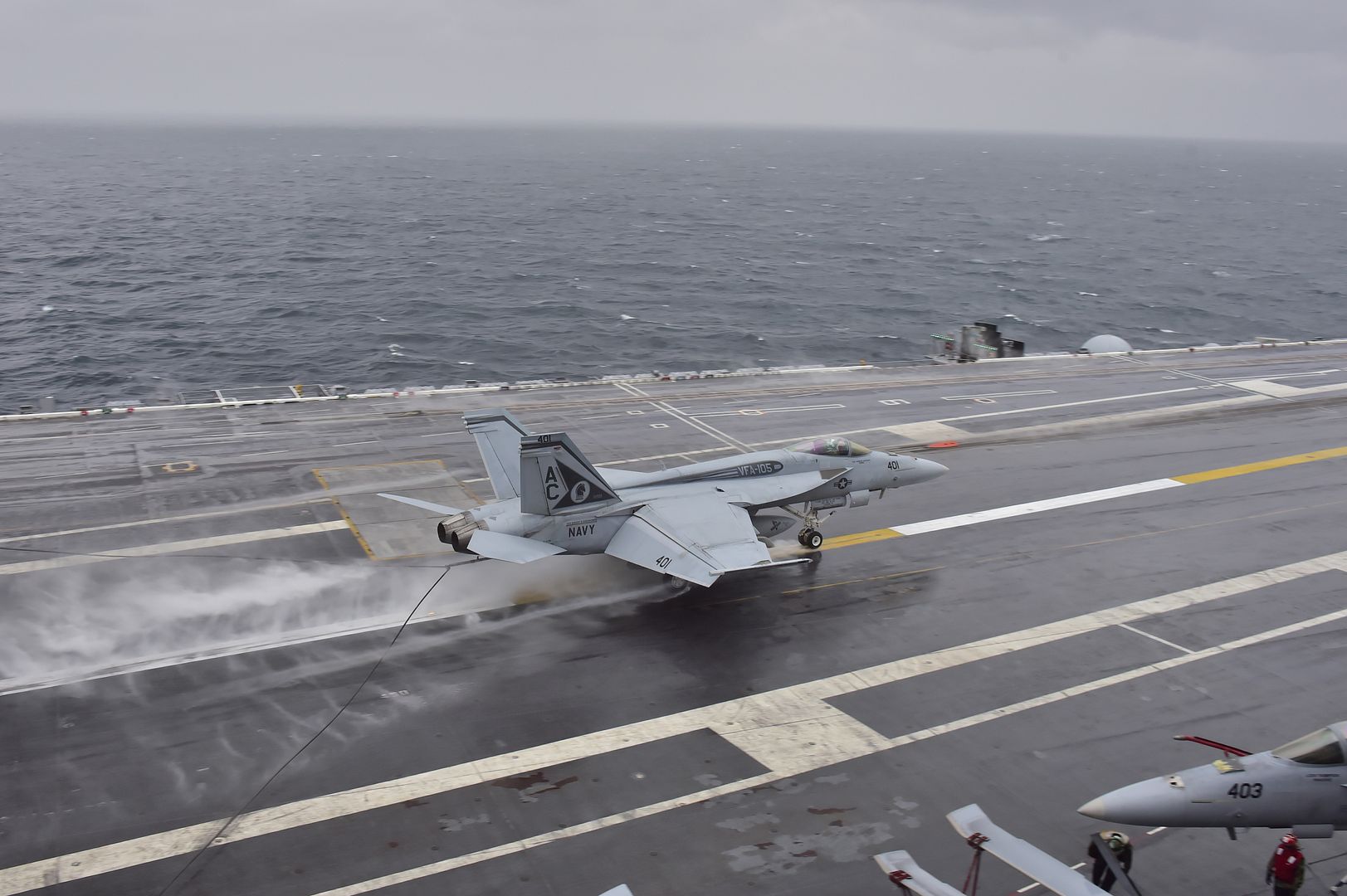
SOUTH CHINA SEA ? (Nov. 22, 2015) ? Fire Controlman 2nd Class Nicholas Darnell and Chief Gunner?s Mate Daniel Bieber hook an off going load onto a SA-330 Puma helicopter assigned to Military Sealift Command dry cargo/ammunition ship USNS Amelia Earhart (T-AKE-6) during a vertical replacement at sea aboard USS Fort Worth (LCS 3). Currently on a 16-month rotational deployment in support of the Asia-Pacific Rebalance, Fort Worth is a fast and agile warship tailor-made to patrol the region?s littorals and work hull-to-hull with partner navies, providing 7th Fleet with the flexible capabilities it needs now and in the future. (U.S. Navy photo by Mass Communications Specialist 2nd Class Antonio Turretto Ramos/Released)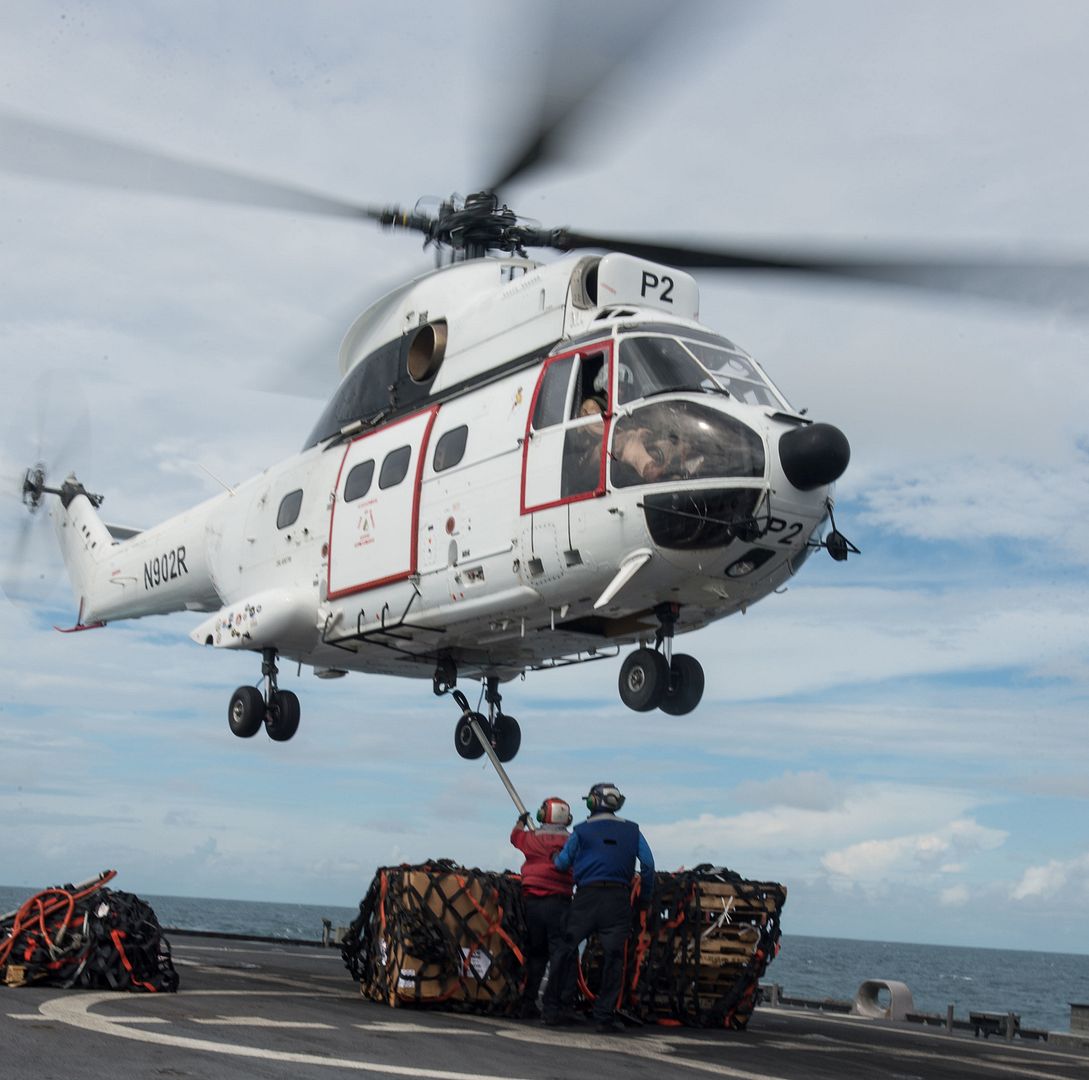
SEATTLE, Nov. 20, 2015 /PRNewswire/ -- Copa Airlines (NYSE: CPA) took delivery of the 100th airplane to join its fleet, a Boeing 737-800 decorated with a special decal celebrating the airline achieving this important milestone.
The airplane, leased from SMBC Aviation Capital, flew from Seattle to its Panama City home base, where it was welcomed by a special ceremony.
"We are proud to celebrate this historic achievement for our company and for the country ? a result of the efforts of our more than 9,000 dedicated coworkers, and the support of our customers, suppliers, government entities and partners," said Pedro Heilbron, CEO, Copa Airlines. "This aircraft symbolizes our airline's steady growth during its 68-year history, as well as the enhancement of Panama's connectivity with the world and its reputation as a major logistics and tourism center, all of which translate to better opportunities for development for the country and for all Panamanians."
With this new airplane, Copa now has 77 Next-Generation 737s in its fleet. In April, the airline signed an order for 61 737 MAX airplanes.
The 737 MAX builds on the strengths of today's Next-Generation 737 by incorporating the latest-technology CFM International LEAP-1B engines, Advanced Technology winglets and other improvements to deliver the highest efficiency, reliability and passenger comfort in the single-aisle market. Airlines operating the 737 MAX will see a 14 percent fuel-use improvement over today's most fuel efficient single-aisle airplanes.
Copa Airlines allows passengers to make fast and convenient connections to 74 destinations in 31 countries in North, Central and South America and the Caribbean through its Hub of the Americas in Panama City, the airline hub with the most international connections in Latin America. For the last two consecutive years, FlightStats has recognized Copa as "Best Airline in Latin America" for its on-time performance and quality of service.
The UK is set to announce plans to obtain nine Boeing P-8 Poseidon maritime patrol aircraft, as well as extend the service life of the Royal Air Force?s Eurofighter Typhoon fighters.
The P-8 acquisition and Typhoon life extenstion will be part of a ?178 billion ($270 billion) investment that will be made in defence equipment and support over the next ten years, says a statement from the prime minister?s office.
Prime Minister David Cameron will outline the plans when he unveils the Strategic Defence and Security Review (SDSR) in the House of Commons later today.
With the last of the RAF?s British Aerospace Nimrod MR2s having already been retired in March of 2010, the cancellation of the replacement Nimrod MRA4 indefinitely extended a so-called ?capability gap? to what had long been considered an indispensable national skillset.
?These roles require an aircraft that can carry torpedoes, as well as being fitted with a broad range of sensors, including radar and sonobuoys, which are operated from the rear of the cabin by a team of specialists,? says the statement. ?These aircraft will also provide maritime search and rescue and surveillance capabilities over land.?
The statement adds that the service life of the Typhoons will be extended 10 years to 2040. This will allow two additional squadrons, bringing total frontline squadron strength to seven, with 12 aircraft per squadron.
?We will also invest in their ground attack capability and fit them with a new Active Electronically Scanned Array radar to ensure they can continue to operate in hostile environments in the future,? says the statement.
From here - https://www.flightglobal.com/news/articles/uk-to-obtain-nine-p-8-maritime-patrol-aircraft-419371/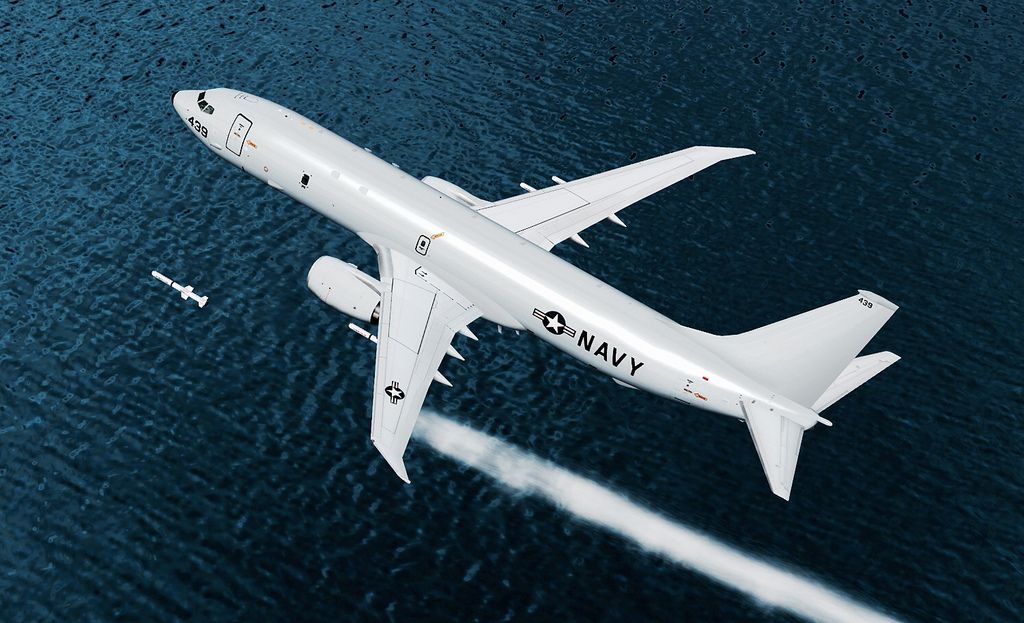
-
9 years agoTue Nov 24 2015, 05:41pm
 Main Admin24 November 2015
Main Admin24 November 2015
The Royal Air Force?s newest surveillance aircraft, Airseeker, and the RAF Sentinel battlefield surveillance aircraft both reached a major milestone last week as they flew their 100th operational sorties in the fight against ISIL.
The RAF?s Air Component Commander in the Middle East, Air Commodore Martin ?Sammy? Sampson said: ?Airseeker and Sentinel?s 100th sorties in counter-ISIL operations demonstrate the exceptional capability the UK is providing to the multinational Coalition. I am extremely proud of the contribution by our servicemen and women that keep our aircraft flying across the Middle East.?
Airseeker and Sentinel are part of the RAF?s Intelligence, Surveillance, Target Acquisition and Reconnaissance (ISTAR) Force, which also includes E-3D Sentry airborne command and control aircraft and Reaper remotely piloted aircraft systems. More than 80 per cent of Airseeker?s flying hours to date have been in direct support of operations, and the ISTAR Force provides around a third of all Coalition airborne intelligence, surveillance and reconnaissance.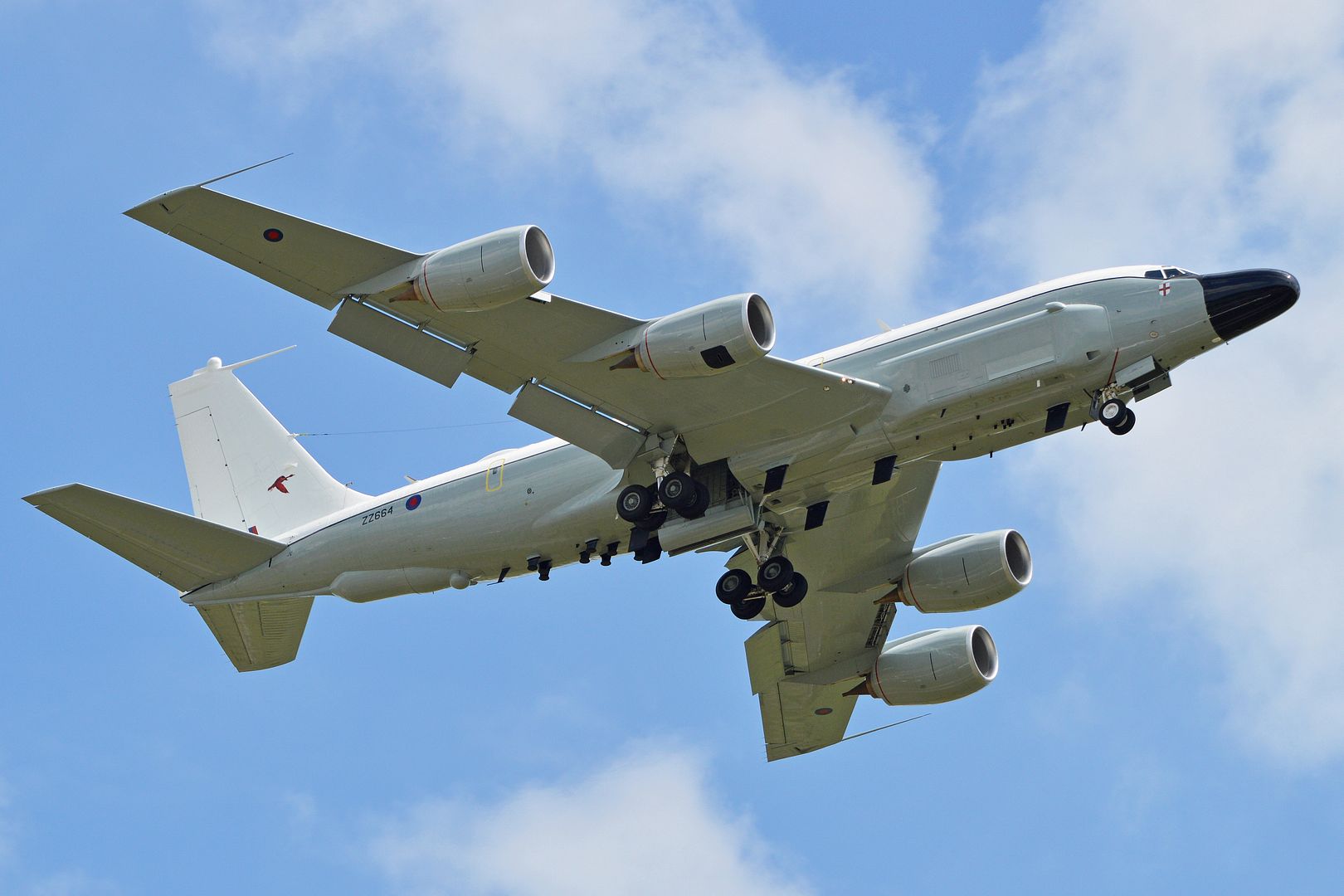
The RAF?s ISTAR capabilities are to be enhanced by the introduction of nine Boeing P-8A Poseidon maritime patrol aircraft, to be based at RAF Lossiemouth in Moray. Yesterday?s Strategic Defence and Security Review also confirmed that four of the RAF?s Sentinel aircraft will have their service extended into the next decade, and Airseeker and Sentry will both remain in RAF service until 2035. The Service?s remotely piloted aircraft fleet will more than double under the Protector programme.
The RAF currently operates two Airseeker aircraft, having received its second aircraft in September ? seven months ahead of schedule. A third Airseeker aircraft is expected to enter service in 2017. The aircraft and its aircrew and support personnel operate from a forward base in the Middle East as part of the RAF?s 901 Expeditionary Air Wing.
Editor: Sqn Ldr Tim Serrell-Cooke and Sqn Ldr Andy Wasley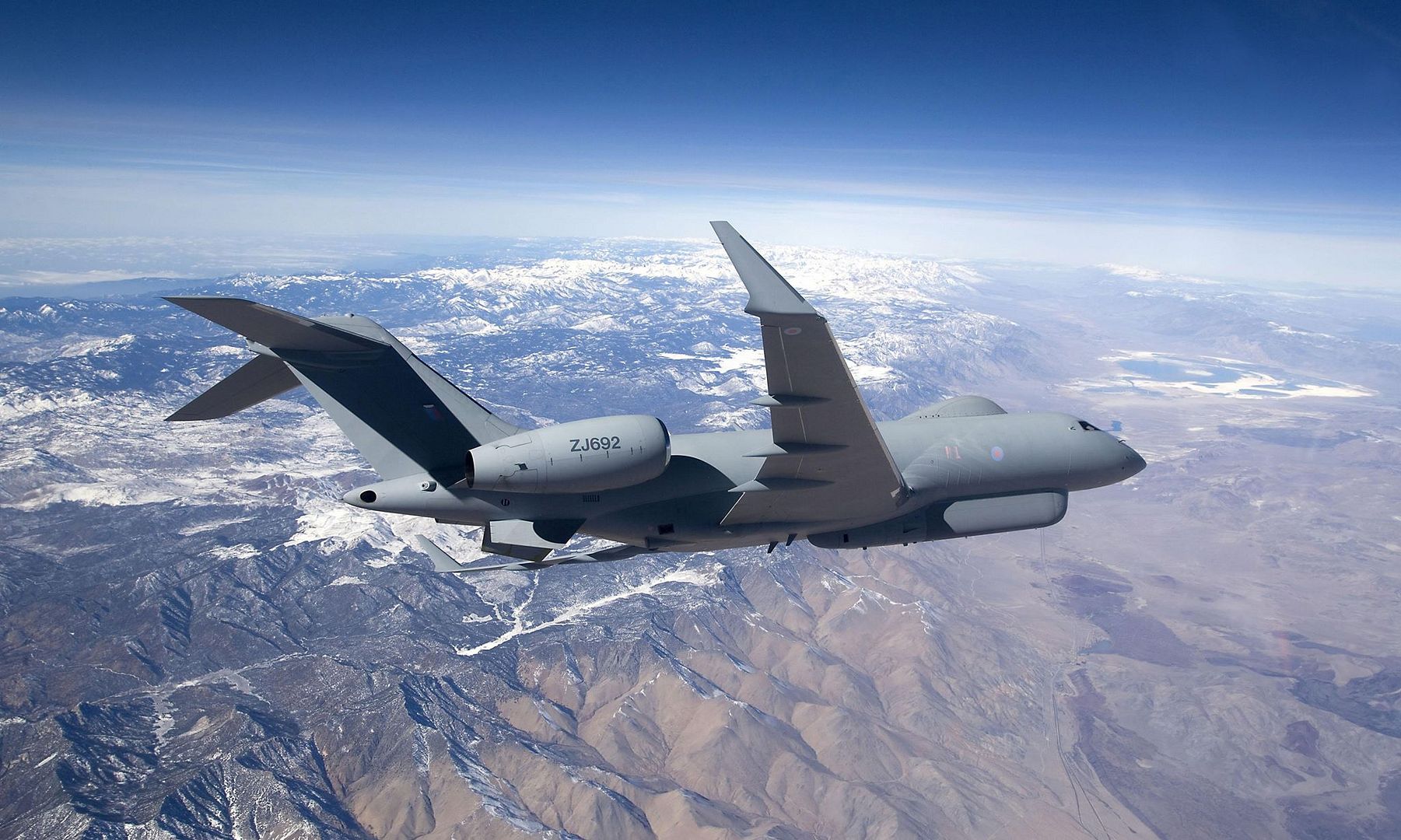
Ice landing for RAAF
C17A Globemasters are well-used to landing in challenging conditions, and their ability to be able to land on short or austere runways never fails to impress.
Late in November was no exception.
Landing with a spray of ice and a temperature of minus nine degrees, a RAAF C17A touched down in Antarctica on the 21st of November with both RAAF and Australian Antarctic Division (AAD) personnel onboard.
Partnering with the AAD, Air Force is undertaking five test flights to Antarctica between November 2015 and February 2016 to trial the use of the aircraft in delivering cargo to AAD bases. The C-17A landed at Wilkins Aerodrome, located approximately 70 kilometres south east of Casey station in East Antarctica.
Commander Air Mobility Group, Air Commodore Richard Lennon said landing in Antarctica only further demonstrates the flexibility of the Air Force around the world on operations.
"The C17A is not just a cargo plane, this amazing aircraft has the potential to be able to transport personnel and cargo to Antarctica in a time frame that has never been possible before.
"Not only does the C17A have the ability to be able to carry up to 70 tonnes of cargo and fly this long range mission but one of the most important things about this aircraft is its safety aspect. We do not have to refuel in Antarctica so should conditions change enroute we do not have to land to refuel, we can simply turn around and come back to Hobart and that is a capability that few other aircraft can offer.
"These missions allow us to test our C-17A's in extremely challenging Antarctic conditions, while supporting the great work carried out by the AAD."
Pilot of the C17A, Flight Lieutenant Simon Marshall said this had been an exciting experience.
"This is one of the reasons I love flying this aircraft, the ability of it to be able to land almost anywhere.
"Landing in these conditions is an amazing training opportunity and missions such as these are an invaluable experience, allowing me to not only test the aircraft's capabilities but also enhance my own flying skills."
As the Wilkins runway is sited on glacial ice, a series of tests are conducted on the runway prior to use to ensure the prescribed hardness, friction and density requirements are met. With extreme temperatures, sometimes with a wind-chill factor of up to minus 70, landing on this runway is not to be taken lightly.
This is the first time in more than five decades the Royal Australian Air Force has landed on ice in Antarctica.
The aircraft was loaded with a Haaglund dual cab vehicle that can travel over both snow and ice that will be used to transport personnel and equipment around the stations. Other cargo included two 4x4 quad bikes and building infrastructure materials.
Although these flights are very much in the trial stage, they will allow RAAF and AAD to explore the capability of the C17A on the Wilkins ice runway and the possibility of future flights in years to come.
On the aircraft was also an Aeromedical Evacuation team who completed a simulation exercise, evacuating an intensive care patient from Wilkins Aerodrome to Hobart.
This exercise allowed the team to identify any issues that could potentially arise from an aeromedical evacuation, should RAAF explore the possibility of assisting AAD with support in medical emergencies in the future.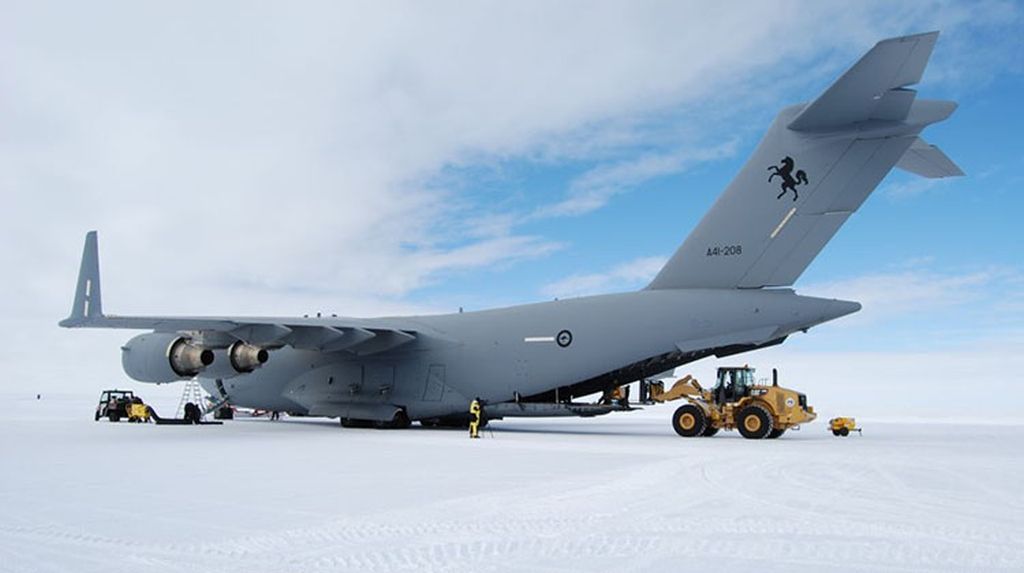
On November 19, 2015, five modernized AN?32RE light military transports were passed to Indian Air Force. It was a final batch completing works on overhaul, modernization and service life extension of 40 airplanes. According to the contract?s terms, the 8th batch of the aircraft was modernized at SE Plant 410 of Civil Aviation with active participation of ANTONOV Company, the aircraft designer, and more than 20 other enterprises.
In accordance with the contract, 65 AN?32s have to be overhauled and reequipped into the AN?32RE model at BRD?1 plant of Indian AF in Kanpur with participation of Ukrainian enterprises. Till present, two airplanes were upgraded at this plant. Nowadays, Indian specialists are working on four such airplanes.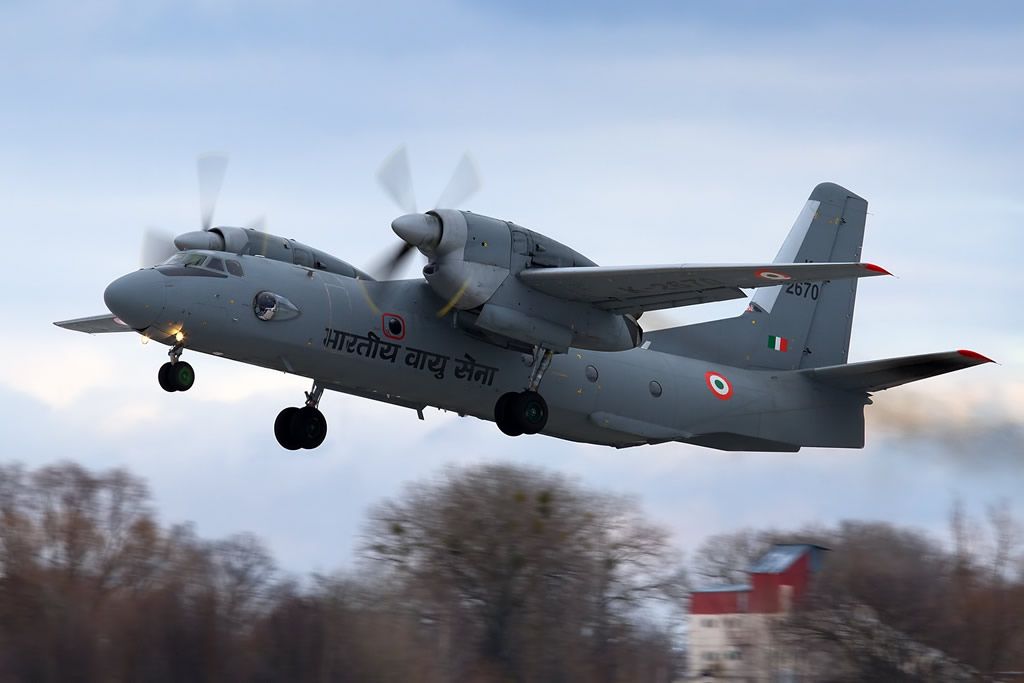
SINGAPORE, Nov. 24, 2015 /PRNewswire/ -- Boeing (NYSE: BA) and BOC Aviation, announced an order for 22 737 airplanes, building on the leasing company's existing order book to fulfill customer demand.
The order, consisting of 11 Next-Generation 737-800s and 11 737 MAX 8 airplanes, will be posted to Boeing's Orders and Deliveries website once finalized.
"This order demonstrates our continued confidence in the Next Generation 737 aircraft for its proven high performance, reliability and asset value," said Robert Martin, managing director and chief executive officer of BOC Aviation. "The Next Generation 737 economics are very attractive to our customers. With the 737 MAX, we are investing in new technology aircraft to meet our customers' long-term fleet planning requirements."
In addition to today's announcement, BOC Aviation has ordered 167 737 airplanes, including 50 737 MAXs and 16 777s.
"BOC Aviation has played an important role in the success of the 737 program and we're delighted they have again put their confidence in Boeing and the 737 family," said Dinesh Keskar, senior vice president, Asia Pacific and India Sales, Boeing Commercial Airplanes. "This new order, on top of the 2014 order for 80 737s, is proof of BOC Aviation's leading position in the leasing market, providing its customers with the most reliable and fuel-efficient single-aisle airplanes."
The 737 MAX incorporates the latest technology CFM International LEAP-1B engines, Advanced Technology winglets and other improvements to deliver the highest efficiency, reliability and passenger comfort in the single-aisle market. The new single-aisle airplane will deliver 20 percent lower fuel use than the first Next-Generation 737s and the lowest operating costs in its class ? 8 percent per seat less than its nearest competitor.
BOC Aviation is a leading global aircraft leasing company with a portfolio of 253 owned and managed aircraft operated by 59 airlines worldwide in 29 countries, with commitments to acquire 203 aircraft, as of 30 September 2015. BOC Aviation, owned by Bank of China, is based in Singapore with offices in Dublin, London, Seattle and Tianjin.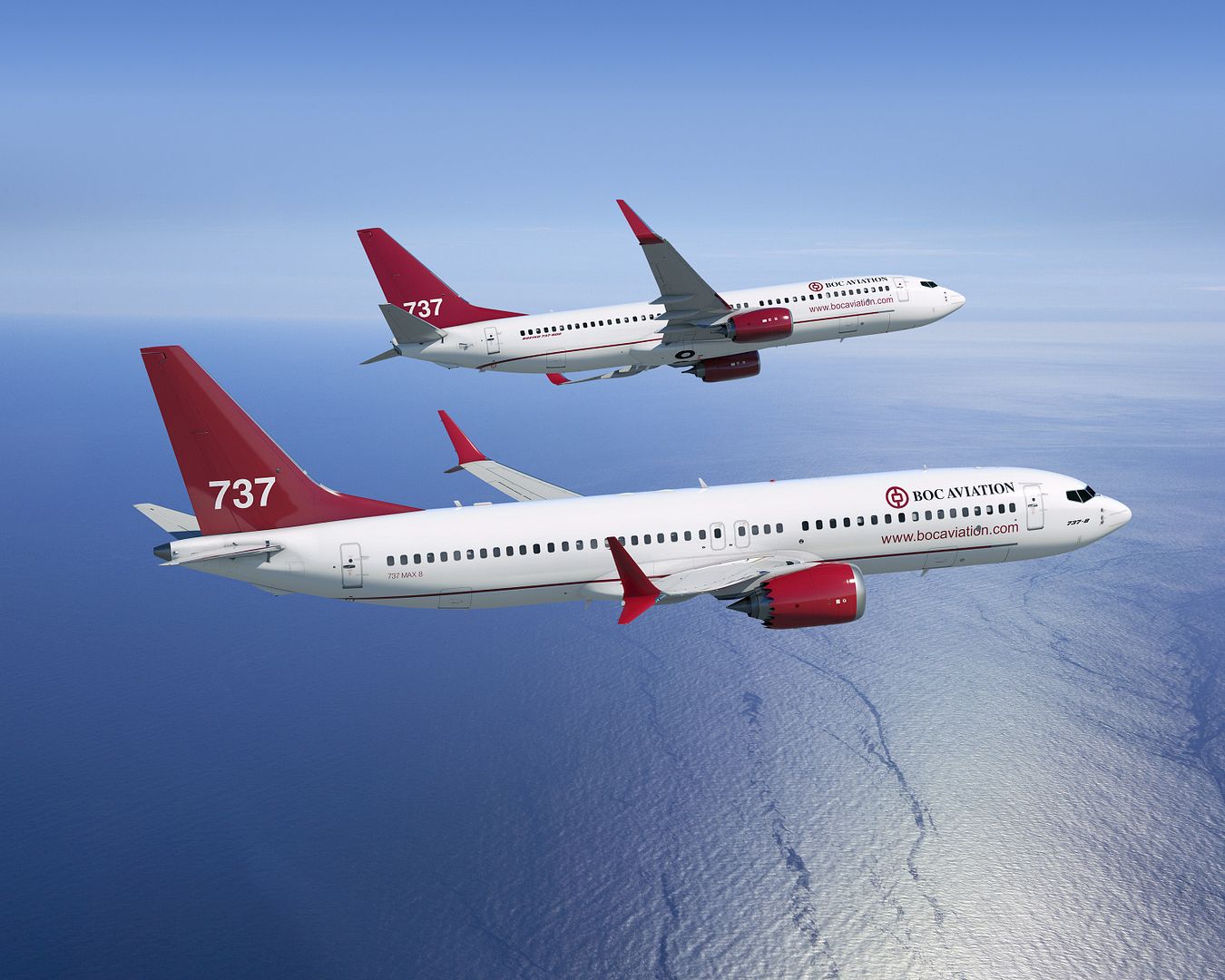
24 November 2015 Press Release
The world's best-selling single aisle aircraft, the A320neo, has received joint Type Certification from the European Aviation Safety Agency (EASA) and the Federal Aviation Administration (FAA) on 24th November 2015. The certified aircraft is powered by Pratt & Whitney Pure Power PW1100G-JM engines.
The EASA A320neo type Certificate was signed by EASA?s Certification Director Trevor Woods and the FAA A320neo Type Certificate by Jeffrey Duven, FAA Manager of Transport Airplane Directorate - Aircraft Certification Service. The Type Certificates were handed over to Airbus? Executive Vice President Engineering, Charles Champion and Airbus A320neo Chief Engineer Pierre-Henri Brousse.
?This double seal of approval represents a great achievement for Airbus. It recognizes the hard work performed by all the teams at Airbus and Pratt & Whitney. It demonstrates the A320neo is meeting all requirements,? said Fabrice Br?gier, Airbus President and CEO. ?The A320neo is now cleared for its first delivery and ready to offer many airlines its winning combination of unbeatable economics and outstanding cabin comfort.?
The A320neo successfully completed a rigorous programme of certification which tested its airframe and systems well beyond their design limits to ensure the aircraft successfully met all airworthiness criteria.
The three flight test aircraft powered by Pratt & Whitney engines successfully accumulated over 1,070 flight hours in some 350 flights. Of these 1,070 flight test hours, 300 were completed with the same aircraft in an airline like environment to ensure operational maturity at entry into service.
The A320neo with Pratt & Whitney engines is the first variant in the NEO Family to receive Type Certification. The A320neo with CFM engines will be certified in the coming months, the A321neo and A319neo in both engines variants will follow.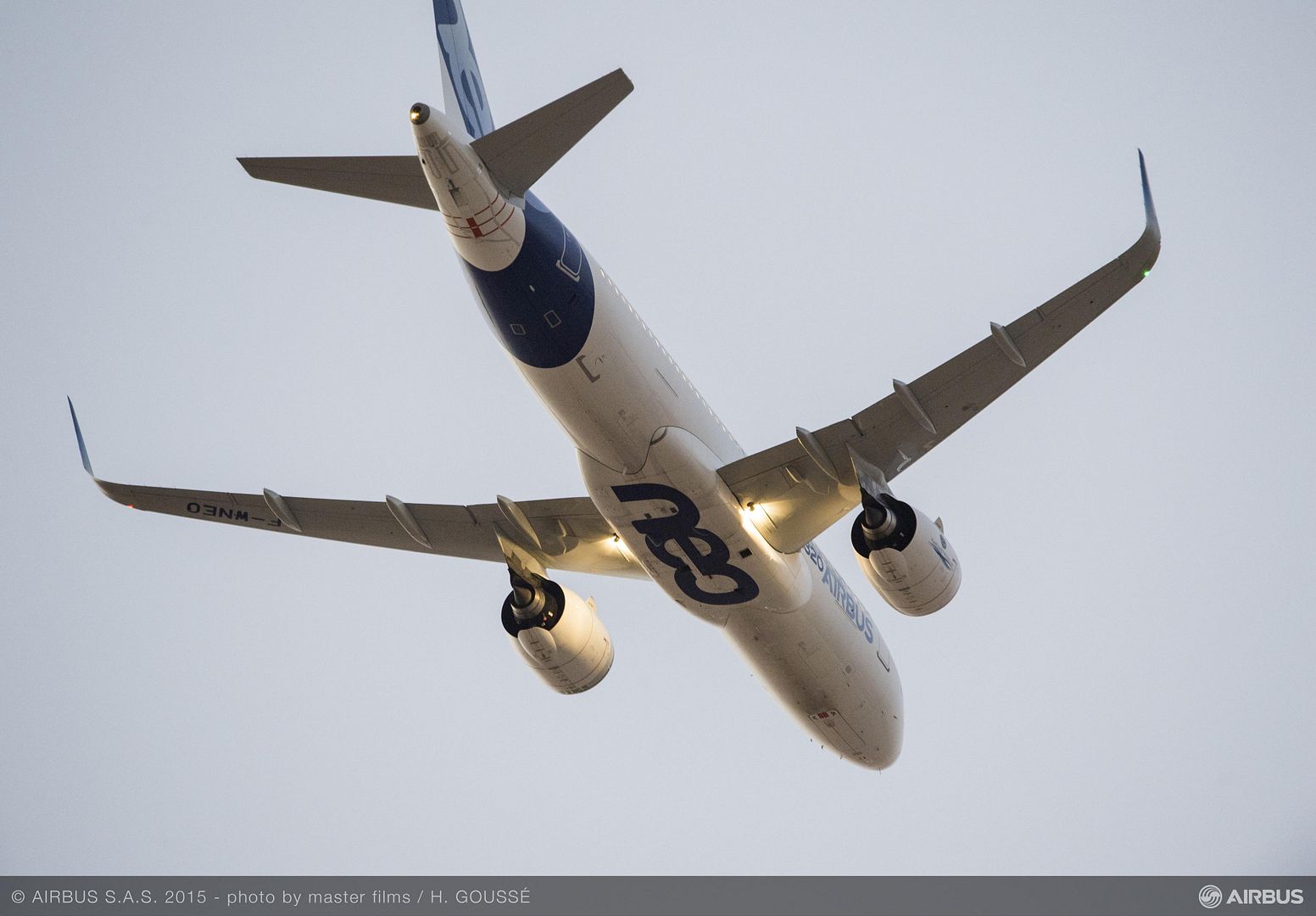
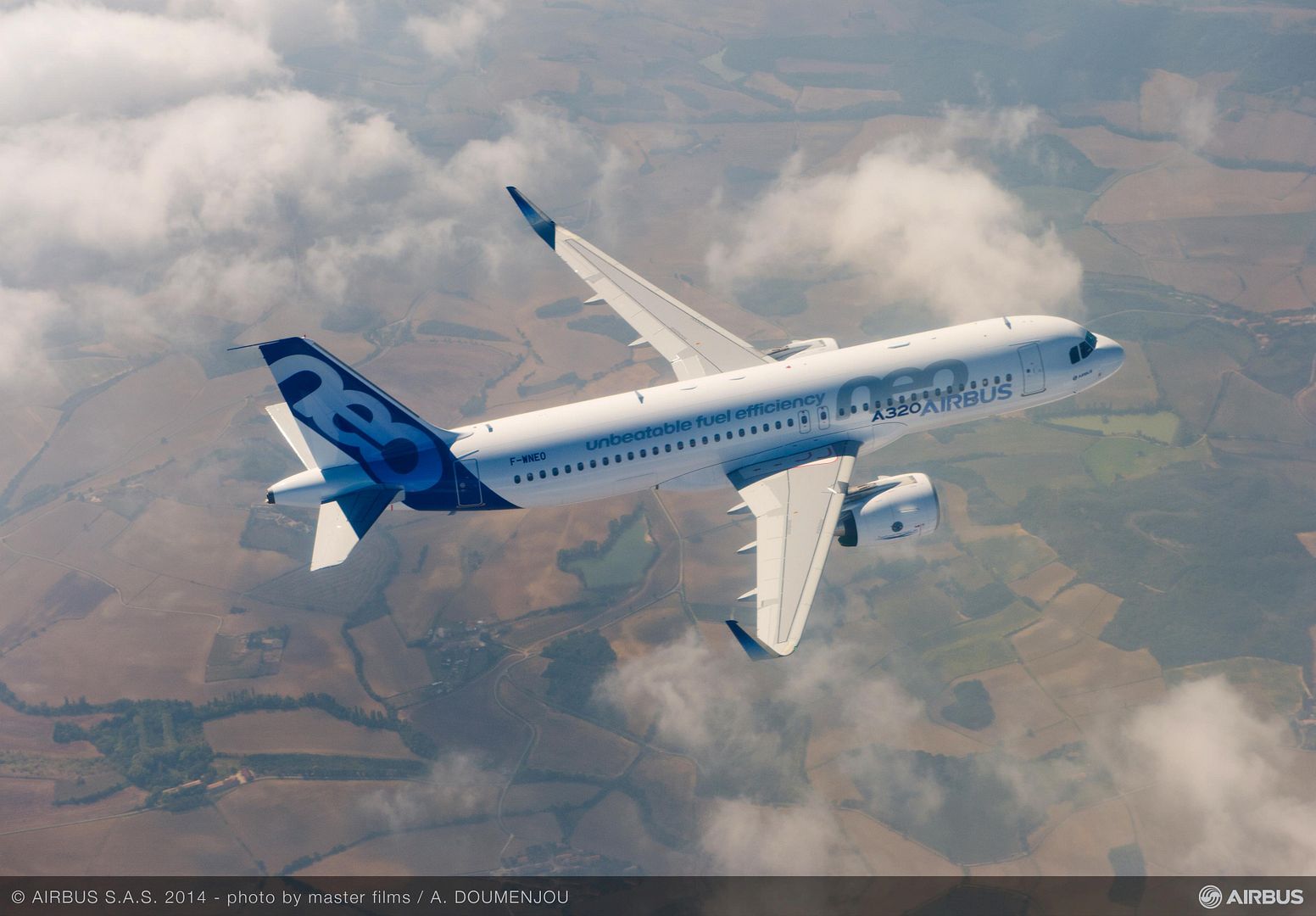
And rather worrying
Nov. 24 the Turkish Air Force shot down what appears to be a Sukhoi Su-24 Fencer that, according to the first reports,that had violated Turkey?s airspace.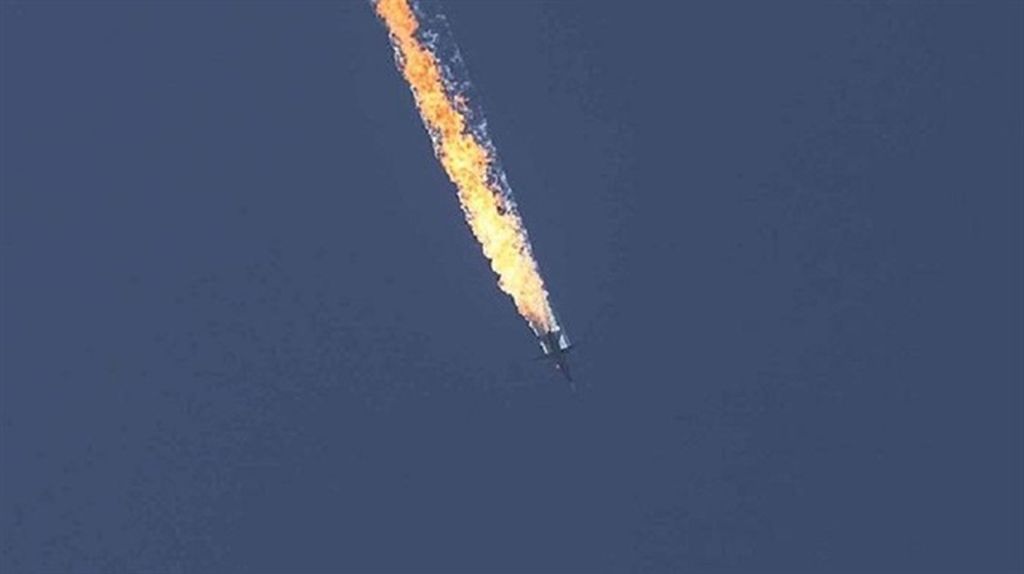
Published on Nov 23, 2015
Military jets from France?s Charles de Gaulle aircraft carrier on Monday flew their first missions over Islamic State-controlled territories in Syria and Iraq and carried out their first airstrikes.
-
 Main AdminWATERS SOUTH OF JAPAN (Nov. 25, 2015) An F/A-18F Super Hornet from the "Diamondbacks" of Strike Fighter Squadron (VFA) 102 launches from the flight deck of the U.S. Navy's only forward-deployed aircraft carrier USS Ronald Reagan (CVN 76). Ronald Reagan and its embarked air wing, Carrier Air Wing (CVW) 5, provide a combat-ready force that protects and defends the collective maritime interests of the U.S. and its allies and partners in the Indo-Asia-Pacific region. (U.S. Navy photo by Mass Communication Specialist 3rd Class Nathan Burke/Released)
Main AdminWATERS SOUTH OF JAPAN (Nov. 25, 2015) An F/A-18F Super Hornet from the "Diamondbacks" of Strike Fighter Squadron (VFA) 102 launches from the flight deck of the U.S. Navy's only forward-deployed aircraft carrier USS Ronald Reagan (CVN 76). Ronald Reagan and its embarked air wing, Carrier Air Wing (CVW) 5, provide a combat-ready force that protects and defends the collective maritime interests of the U.S. and its allies and partners in the Indo-Asia-Pacific region. (U.S. Navy photo by Mass Communication Specialist 3rd Class Nathan Burke/Released)
ATLANTIC OCEAN (Nov 24, 2015) An FA-18E Super Hornet assigned to the Wildcats of Strike Fighter Squadron (VFA) 131 flies over the flight deck of the aircraft carrier USS Dwight D. Eisenhower (CVN 69). Dwight D. Eisenhower, with embarked Carrier Air Wing 3, is underway conducting the Tailored Ship's Training Availability (TSTA) and Final Evaluation Problem (FEP) as part of the basic phase of the Optimized Fleet Response Plan. (U.S. Navy photo by Mass Communication Specialist Seaman Anderson W. Branch/Released)
HITE SANDS MISSILE RANGE, N.M., Nov. 24, 2015 ? A Lockheed Martin (NYSE: LMT) PAC-3 Missile successfully intercepted an incoming target on Thursday, Nov. 19, as part of a U.S. Army-led missile defense flight test at White Sands Missile Range, New Mexico.
The PAC-3 interceptor successfully detected, tracked and intercepted a Patriot-as-a-Target (PAAT), which is a legacy Patriot missile modified to represent a tactical ballistic missile common in today?s operational environment.
?The PAC-3 Missile continues to demonstrate its reliability in the field, and it remains the only combat proven hit-to-kill interceptor in the world,? said Scott Arnold, vice president of PAC-3 programs at Lockheed Martin Missiles and Fire Control. ?As global threats escalate, we expect PAC-3 interceptors to continue serving as a critical defense layer in the protection of soldiers, citizens and infrastructure.?
Two in One:
The intercept is the second successful PAC-3 test in just under one week. On Thursday, Nov. 12, a PAC-3 also intercepted an airborne target as part of the U.S. Army?s Integrated Air & Missile Defense Battle Command System (IBCS) fight test at White Sands.
The PAC-3 Missile is a high-velocity interceptor that defends against incoming threats including tactical ballistic missiles, cruise missiles and aircraft using hit-to-kill technology. PAC-3 currently provides missile defense capabilities for six nations ? the U.S., the Netherlands, Germany, Japan, United Arab Emirates and Taiwan; and Lockheed Martin is on contract for PAC-3 with four additional nations ? Kuwait, Qatar, South Korea and Saudi Arabia.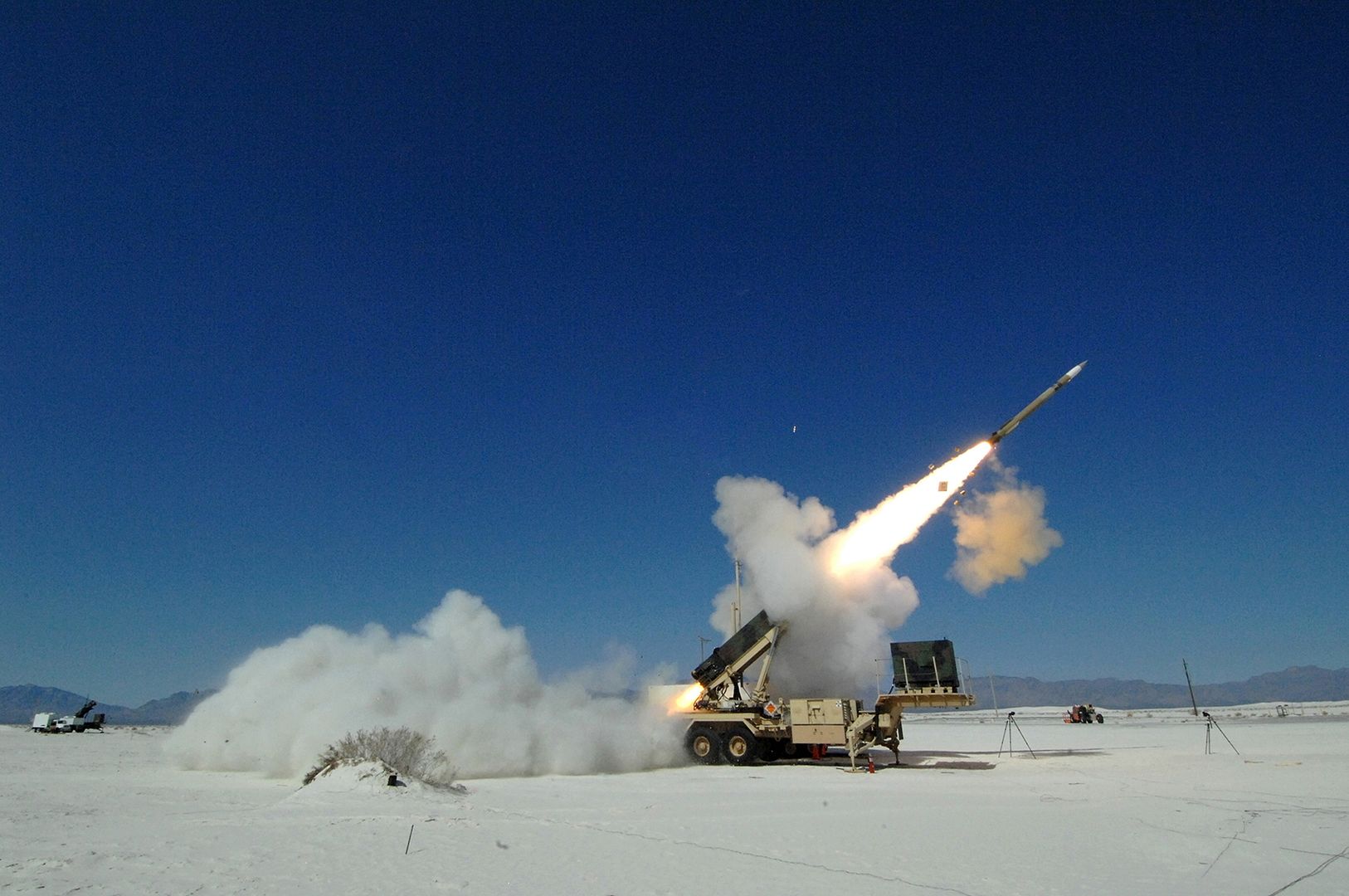
SEATTLE, Nov. 24, 2015 ? Boeing [NYSE:BA] and Biman Bangladesh Airlines today celebrated the airline's first direct-purchased Next-Generation 737-800 as part of the country?s national airline?s fleet modernization plan.
?We are extremely satisfied with the Next-Generation 737-800 which has earned a worldwide reputation for its reliability and operational efficiency,? said Kyle Haywood, Managing Director & CEO, Biman Bangladesh Airlines. ?Biman Bangladesh is on target to expand and modernize its fleet as well as offer our passengers a superior onboard experience.?
As part of the first phase of its fleet modernization plan, the Dhaka-based airline currently operates a total of six Boeing 777s and two Next-Generation 737-800s. With this delivery, Biman Bangladesh Airlines adds one additional 737-800 and has four 787 Dreamliners on order.
Boeing is very proud of Biman Bangladesh?s confidence in our products and we are certain the 737-800 will support the airline?s fleet modernization and operational efficiency goals,? said Marty Bentrott, vice president, Sales, Middle East, Russia and Central Asia, Boeing Commercial Airplanes ?We look forward to continuing this partnership well into the future.?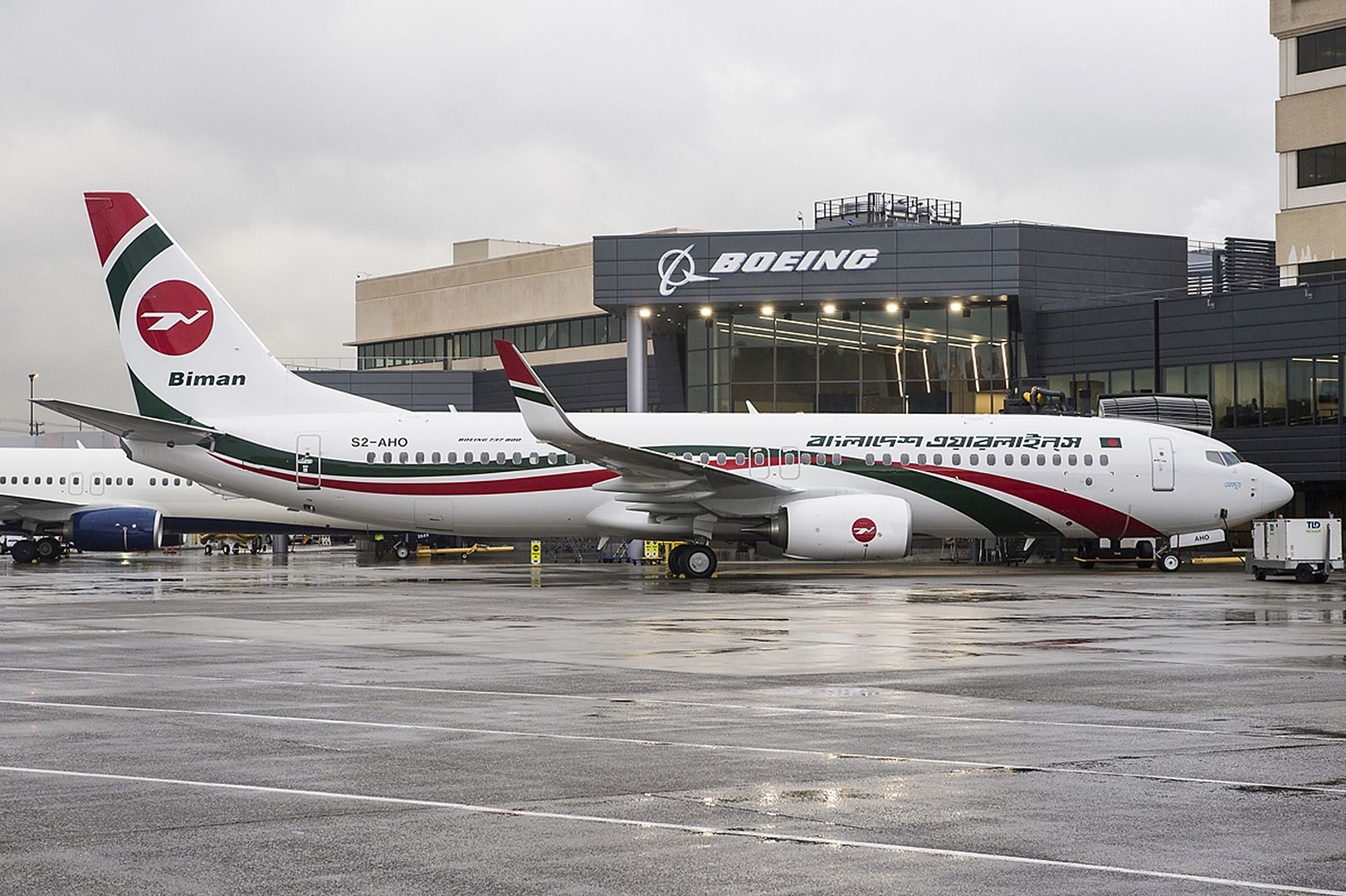
-
8 years agoThu Nov 26 2015, 02:35pm
 Main AdminNovember 24th
Main AdminNovember 24th
The first FAdeA IA-58H Pucara light strike aircraft equipped with new Pratt & Whitney Canada PT-6A-62 engines, after several delays, took its maiden flight.
The aircraft selected (tail number AX-561) in June received a re-modelled set of wings from Israel Aerospace Industries (IAI) to accommodate the replacement engines, and then went through several ground tests in preparation for the flight.
FAdeA initiated the Pucara's engine upgrade process in 2011, selecting the ubiquitous PT-6A-62 to replace the discontinued Turbomeca Astazou XVIG, which was proving difficult to maintain.
The project plans to upgrade as many as 20 frames from Argentine Air Force stocks, but currently only one set of re-modeled wings has been received from IAI and it is unclear if more will be forthcoming in the near term.
MOSCOW --- On Thursday Russia deployed its S-400 Triumf (SA-21 Growler) missile system to the Khmeimim Air Base in Syria after a Russian Su-24 Fencer bomber was shot inside Syrian airspace by Turkey on Tuesday.
"We are aware of reports that Russia will deploy advanced surface-to-air missile systems to Syria?. We expect that if Russia follows through, it will abide by our Memorandum of Understanding regarding flight safety and not direct this system against Coalition aircraft," US Embassy spokesman Will Stevens said.
In October, US and Russian officials signed a memorandum of understanding over safety procedures for the two countries? respective air missions in Syria.
The document seeks to prevent air incidents between Russian and US aircraft, including drones, operating in the Syrian airspace.
The S-400 Triumf (SA-21 Growler) is Russia's next-generation air defense system, carrying three different types of missiles capable of destroying aerial targets at short-to-extremely long range.
The deployment of Russian S-400 anti-aircraft defense systems in Syria will not have a significant impact on US-led coalition action in the country as both sides have the common goal of defeating Islamic State radicals in Syria, Commander of US Air Forces Central Command said.
"We have pretty good connectivity with the Russians," Lt. Gen. Charles Brown Jr. told Air Force Times on Wednesday, adding that the memorandum of understanding signed by the US-led coalition and Russia stipulates that there should be no "hostile acts or hostile intent from the coalition toward the Russians or from the Russians toward the coalition."
Brown admitted that communication between Russia and the US-led coalition on the subject of military action in Syria is conducted mostly to ensure flight safety and there is practically no coordination or cooperation, however, both sides are interested in defeating ISIL.
"Yes, it [Russia?s S-400 deployment] does complicate things a little bit, and we?ll put some thought to it, but we still have a job to do here, and we?re going to continue to do that job ? to defeat Daesh [ISIL]," Brown told Air Force Times.
On Tuesday, a Russian Su-24 jet crashed in Syria. Ankara has claimed that it downed the Russian aircraft because it violated Turkish airspace. Russian President Vladimir Putin said that the plane was downed by an air-to-air missile launched by a Turkish F-16 jet over Syrian territory, falling 4 kilometers (2.5 miles) from the Turkish border.
The Russian Defense Ministry declared after the incident that all Russian bombers operating in Syria will now be flying only under the cover of fighter aircraft.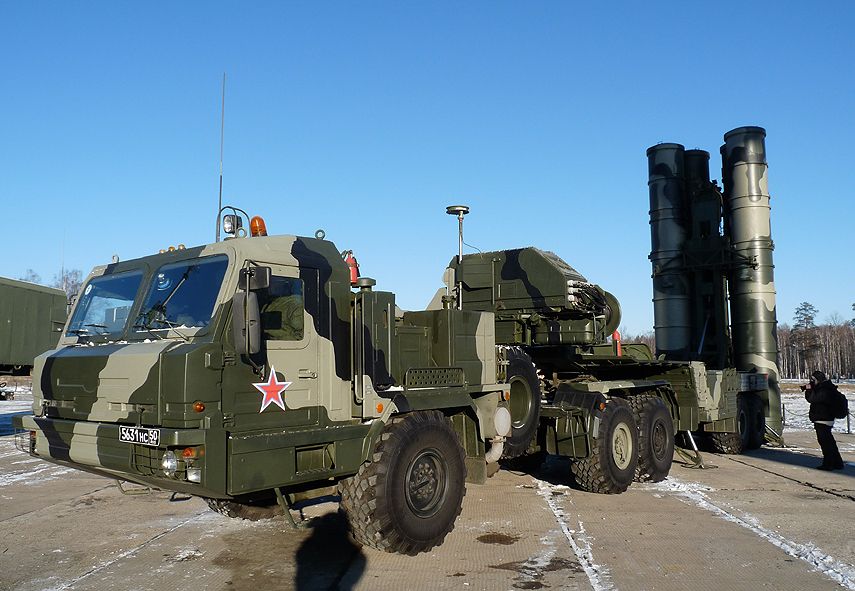
The UK is to receive a further two Beechcraft King Air 350-derived Shadow R.1 electronic intelligence (ELINT) aircraft under plans announced in the Strategic Defence and Security Review (SDSR), the Ministry of Defence (MoD) confirmed to IHS Jane's on 24 November.
Two aircraft will be delivered to the Royal Air Force (RAF) in addition to the six already fielded, while the one platform that is currently used for training will be missionised for an operational fleet of eight. The MoD did not provide a timeline for these procurement and upgrade processes.
Operated out of RAF Waddington by 14 Squadron, the Shadow R.1 was first procured in 2007 as an urgent operational requirement (UOR) to take on the intelligence, surveillance, target acquisition, and reconnaissance (ISTAR) role in Afghanistan.
The MoD has not publically disclosed details of the Shadow R.1s equipment fit or mission, except to say that "ISTAR improves a military commander's awareness of what is happening on the ground or in the air, allowing him to formulate sound plans in an operational environment. It is a powerful tool, indispensable when conducting modern [?] day operations".
Images of the Shadow R.1 show it to be fitted with what appears to be an electro-optic (EO) turret (tentatively identified as Raytheon's multisensor Airborne Vision Enhanced System (AVES) unit) and a forward-looking EO wide-area surveillance (WAS) sensor, which in Afghanistan would have been used for counter-improvised explosive device (C-IED) work, but which can also provide pattern-of-life intelligence. Other systems are believed to comprise a forward-looking infrared (FLIR) sensor, synthetic/inverse synthetic aperture radar, a datalink and HF/UHF/VHF, and satellite communications.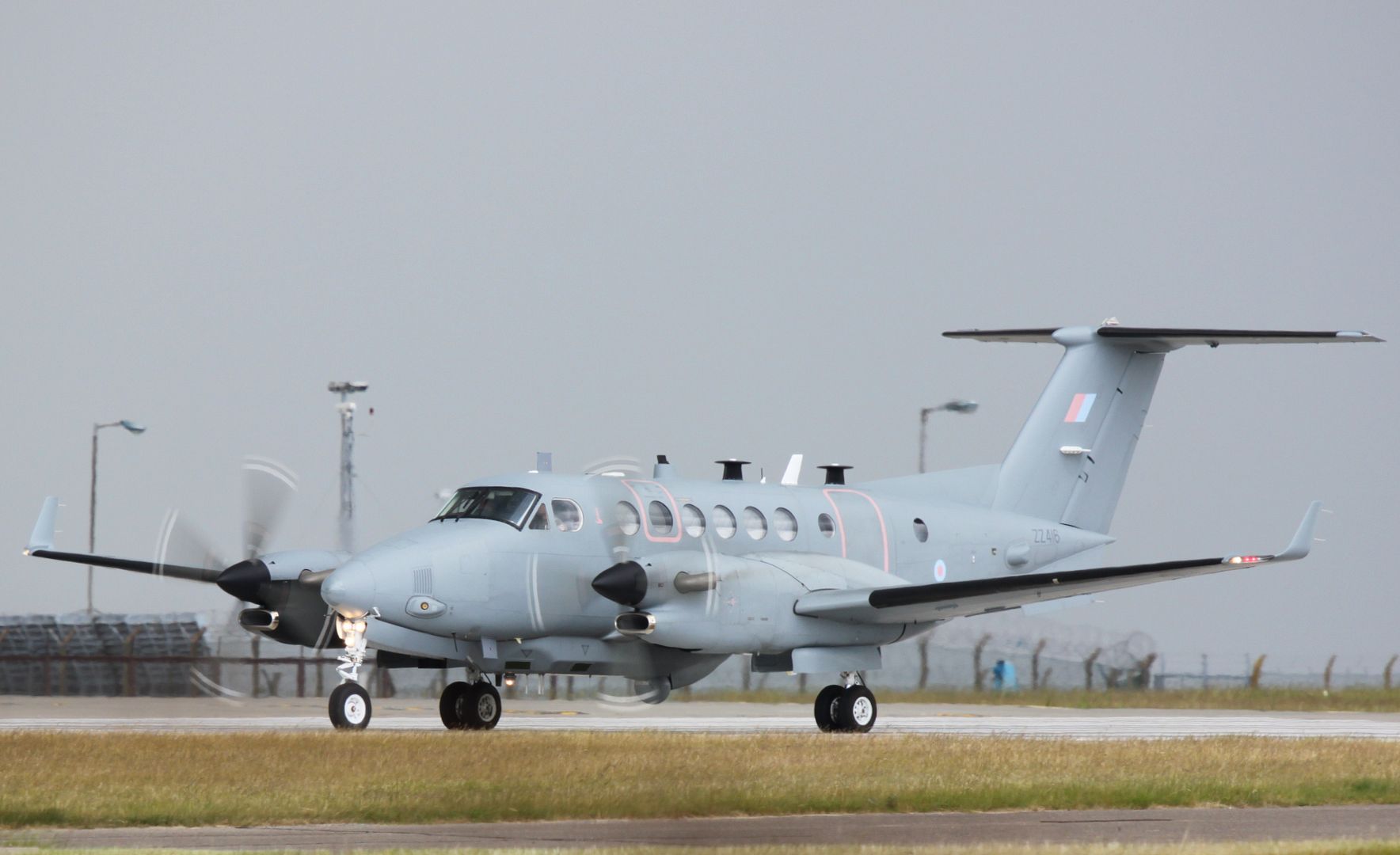
November 26 th
Germany will send Tornado reconnaissance aircraft over Syria to support France's battle against Isis, said MP Henning Otte, defence spokesman for Merkel's Christian Democratic Union (CDU).
"We won't just strengthen the training mission [for Kurdish Peshmerga fighters] in northern Iraq, but also push forward our engagement in the battle against Isis terror in Syria with reconnaissance Tornados," Otte said.
Luftwaffe (German air force) tankers might also offer French planes air-to-air refuelling, sources told Politico.eu and Frankfurter Allgemeine Zeitung managing editor Lorenz Hemicker.
-
 Main AdminF-15 Fighting Eagles from the 428th Fighter Squadron arrived at Luke Air Force Base, Ariz., Nov. 19, 2015. The F-15s came in support of the training exercise Forging Saber from Mountain Home AFB, Idaho. Forging Sabre is an exercise involving the 428th FS, Luke AFB?s 425th FS and members of the Republic of Singapore armed forces and will be held Dec. 1-13. (U.S. Air Force photo/Senior Airman James Hensley)
Main AdminF-15 Fighting Eagles from the 428th Fighter Squadron arrived at Luke Air Force Base, Ariz., Nov. 19, 2015. The F-15s came in support of the training exercise Forging Saber from Mountain Home AFB, Idaho. Forging Sabre is an exercise involving the 428th FS, Luke AFB?s 425th FS and members of the Republic of Singapore armed forces and will be held Dec. 1-13. (U.S. Air Force photo/Senior Airman James Hensley)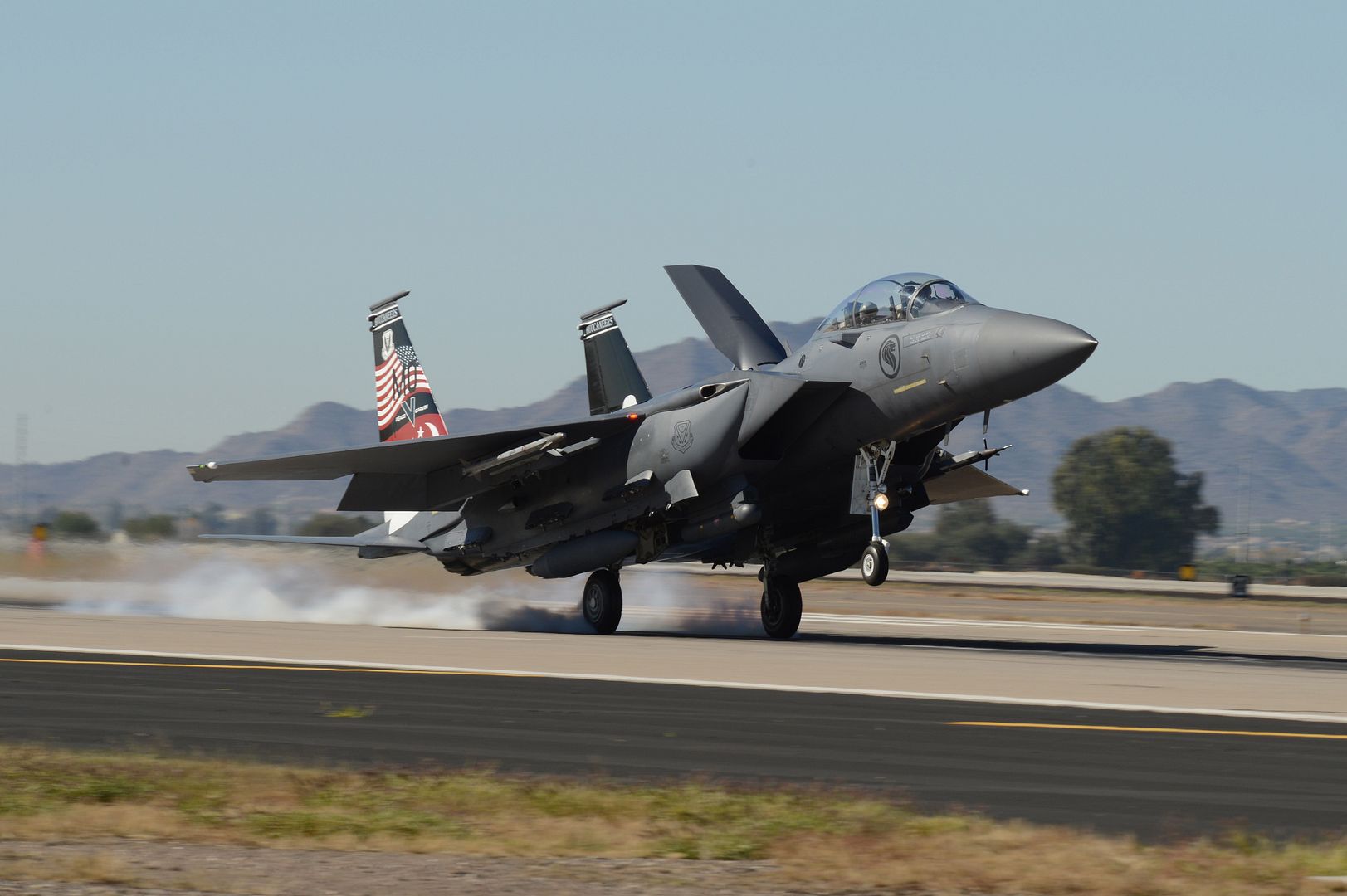
23rd November.
A C-130 Hercules aircraft has marked the 50th year of New Zealand?s airlift support flights to Antarctica by delivering over 3000 kilograms of freight to the icy continent yesterday.
The mission was the first of eight airlift support flights to be carried out by an RNZAF C-130 that is planned for the summer season.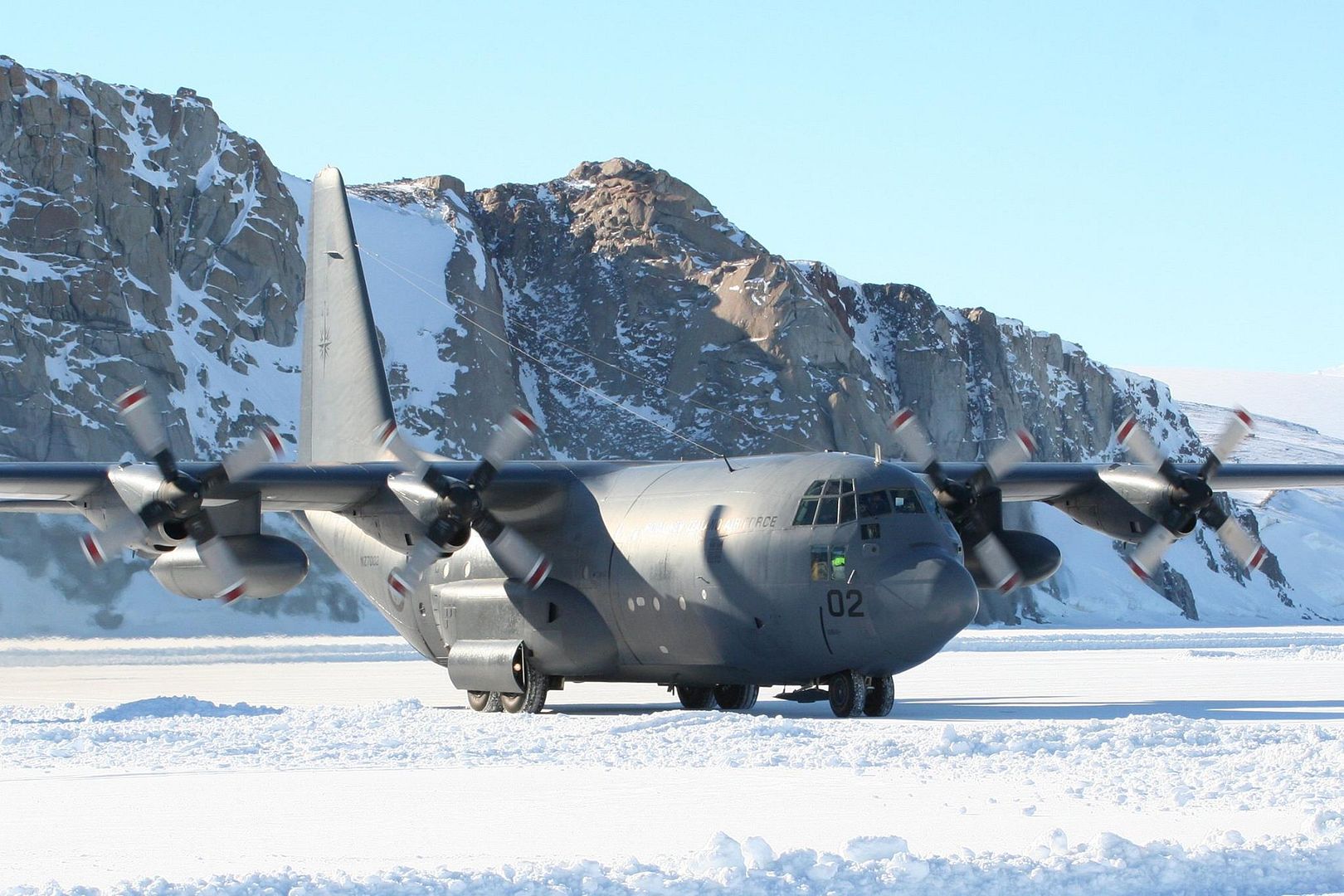
The Korea Herald; issued Nov 26, 2015.
Korea Aerospace Industries Ltd., South Korea's sole aircraft manufacturer, said Friday that it has made the first delivery of its multi-mission jets to the Philippines, further solidifying its status as an aircraft exporter.
The two FA-50PH took off from Sacheon, 437 kilometers south of Seoul, to make the 2,482 kilometer "ferry flight" to the Philippines. The pair are expected to arrive at Clark Air Base on Saturday, KAI said.
The ferry flight involves the planes being directly flown to their destination and could involve making stops to refuel.
KAI said such delivery methods require careful planning because it has to take into consideration weather conditions and transit through airspace regulated by other countries.
The two planes are part of a $420 million government-to-government deal inked between Seoul and Manila that calls for the export of 12 FA-50PHs.
The two-seat supersonic jets are variants of the FA-50 light attack fighters in service with the South Korean Air Force. The planes that are derived from the T-50 advanced trainer can be armed with air-to-air heat seeking missiles, bombs and rockets, and have an automatic cannon.
KAI said that the first transfer adheres to pre-arranged delivery scheduled with the remaining 10 aircraft to be delivered by 2017. The 12 FA-50PHs will be the first supersonic jets used by the Philippines Air Force since they retired their fleet of F-5s.
"Meeting the delivery time will enhance the trust and confidence of customers," the aerospace company said. KAI was able to meet the delivery schedule when it sold 16 T-16 jets to Indonesia.
The company then said it is working to meet the delivery schedules for orders secured from Iraq and Thailand.
KAI has so far received 133 plane orders from Indonesia, Turkey, Peru, Iraq and Thailand for both the T-50 series jets and the KT-1 tandem, prop-driven basic trainers. These orders are worth some $3.3 billion.
The company said it is negotiating with Peru and Botswana to sell the T-50 jets, as well as seeking new customers in Europe, Asia, Africa and Latin America for the KT-1.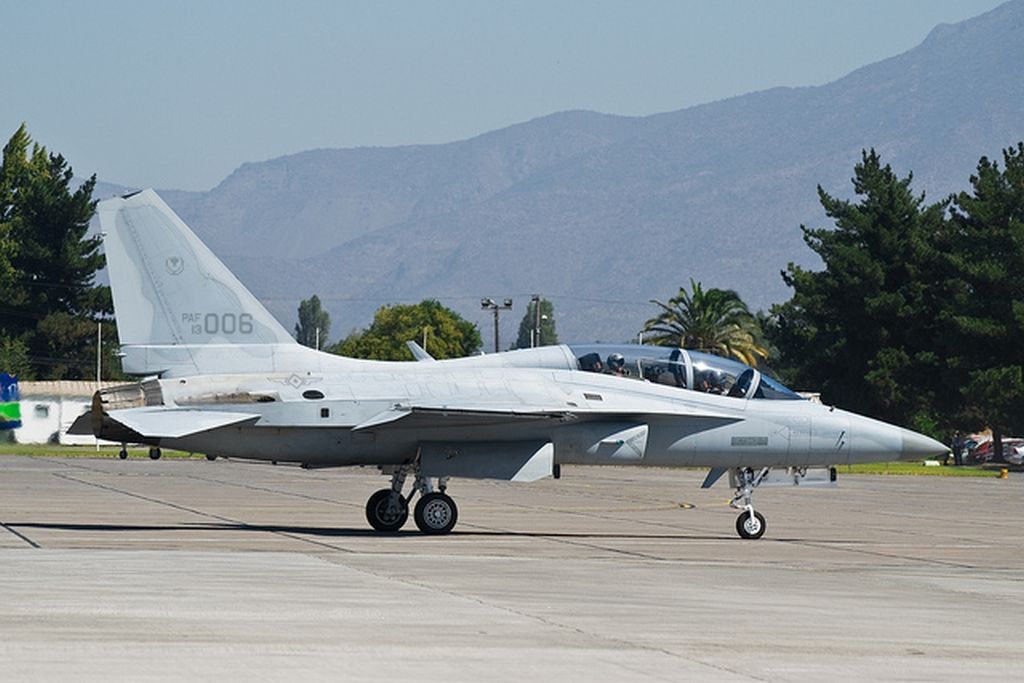
Moscow, November 27. Today the Sukhoi Company handed over another batch of Su-34 frontline bombers to the Ministry of Defense of the Russian Federation according to the 2015 State Defense Order. The aircraft took off from the V.P.Chkalov Novosibirsk Aircraft Plant?s airfield and headed to the place of their deployment.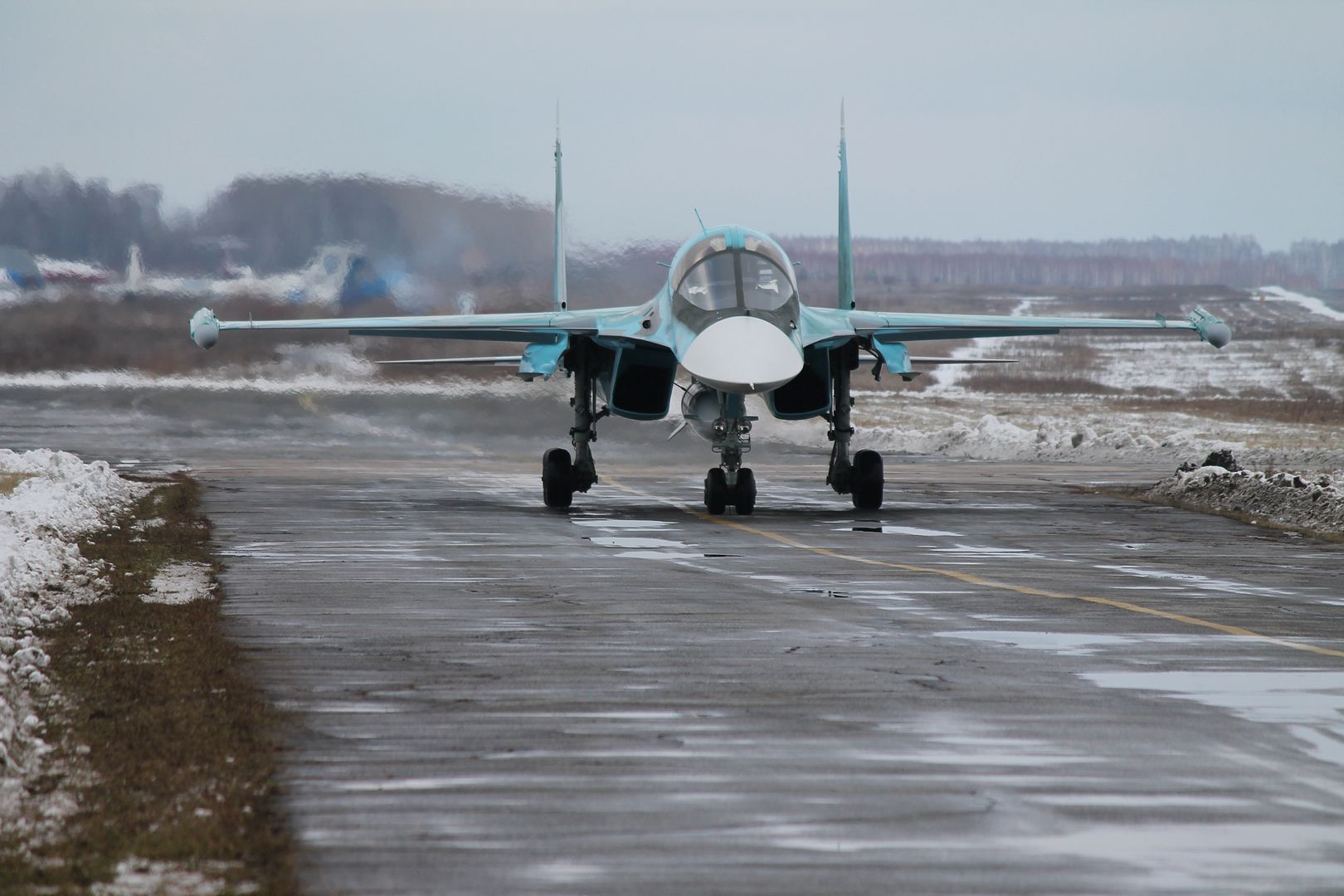
-
 Main AdminMeanwhile in the UK
Main AdminMeanwhile in the UK

-
8 years agoTue Dec 01 2015, 02:59pm
 Main AdminATLANTIC OCEAN (Nov. 27, 2015) - An F/A-18E Super Hornet assigned to the Gunslingers of Strike Fighter Squadron (VFA) 105 makes an arrested landing on the flight deck of the aircraft carrier USS Dwight D. Eisenhower (CVN 69). Dwight D. Eisenhower, with embarked Carrier Air Wing 3, is underway conducting the Tailored Ship's Training Availability (TSTA) and Final Evaluation Problem (FEP) as part of the basic phase of the Optimized Fleet Response Plan. (U.S. Navy photo by Mass Communication Specialist Seaman Anderson W. Branch/Released)
Main AdminATLANTIC OCEAN (Nov. 27, 2015) - An F/A-18E Super Hornet assigned to the Gunslingers of Strike Fighter Squadron (VFA) 105 makes an arrested landing on the flight deck of the aircraft carrier USS Dwight D. Eisenhower (CVN 69). Dwight D. Eisenhower, with embarked Carrier Air Wing 3, is underway conducting the Tailored Ship's Training Availability (TSTA) and Final Evaluation Problem (FEP) as part of the basic phase of the Optimized Fleet Response Plan. (U.S. Navy photo by Mass Communication Specialist Seaman Anderson W. Branch/Released)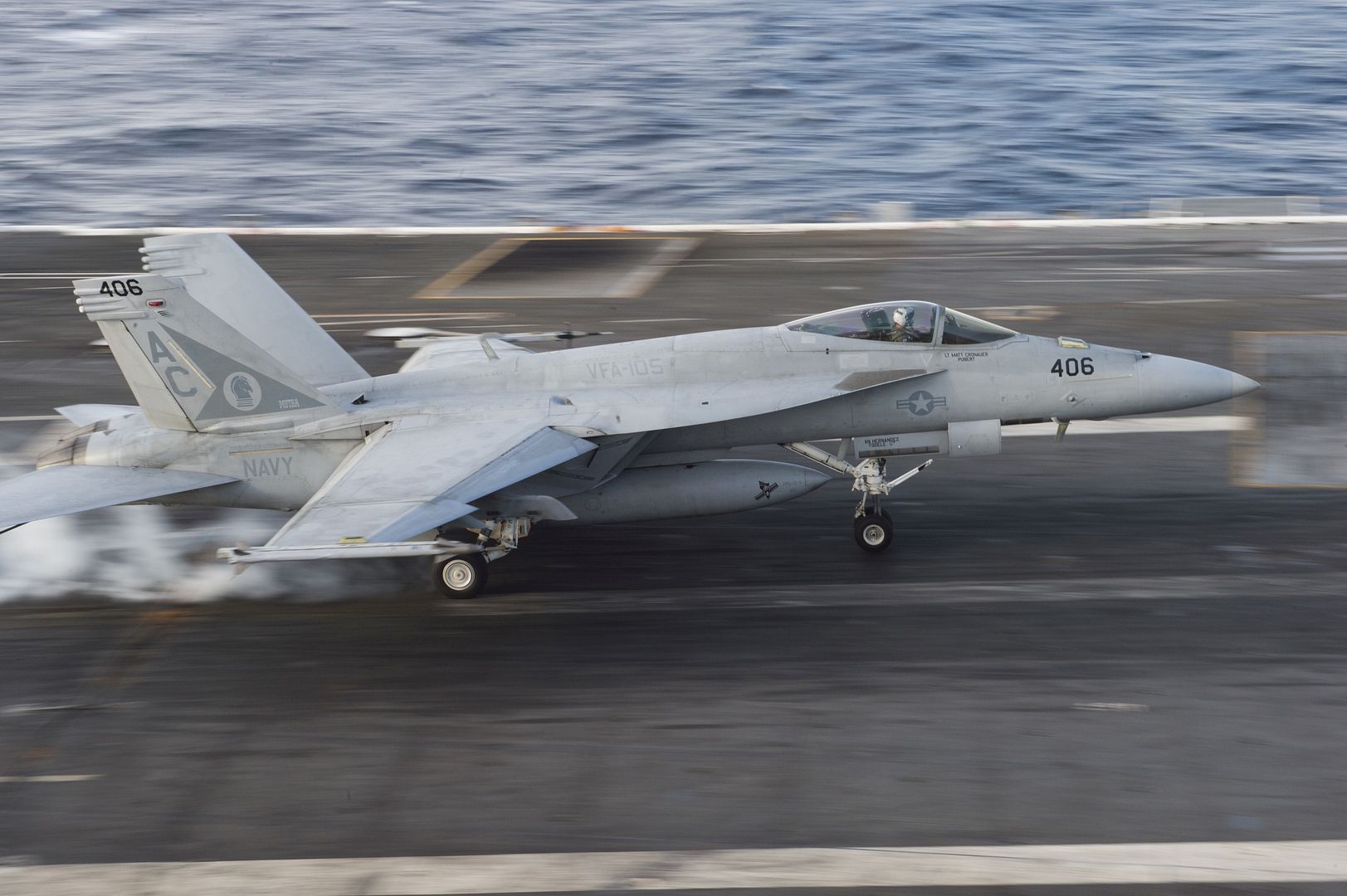
ATLANTIC OCEAN (Nov. 27, 2015)- An F/A-18F Super Hornet assigned to the Swordsmen of Strike Fighter Squadron (VFA) 32 lands on the flight deck of the aircraft carrier USS Dwight D. Eisenhower (CVN 69). Dwight D. Eisenhower is currently underway with embarked Carrier Air Wing 3 conducting the Tailored Ship's Training Availability (TSTA) and Final Evaluation Problem (FEP) phase of their pre-deployment schedule. (U.S. Navy photo by Mass Communication Specialist 3rd Class Ryan U. Kledzik/Released)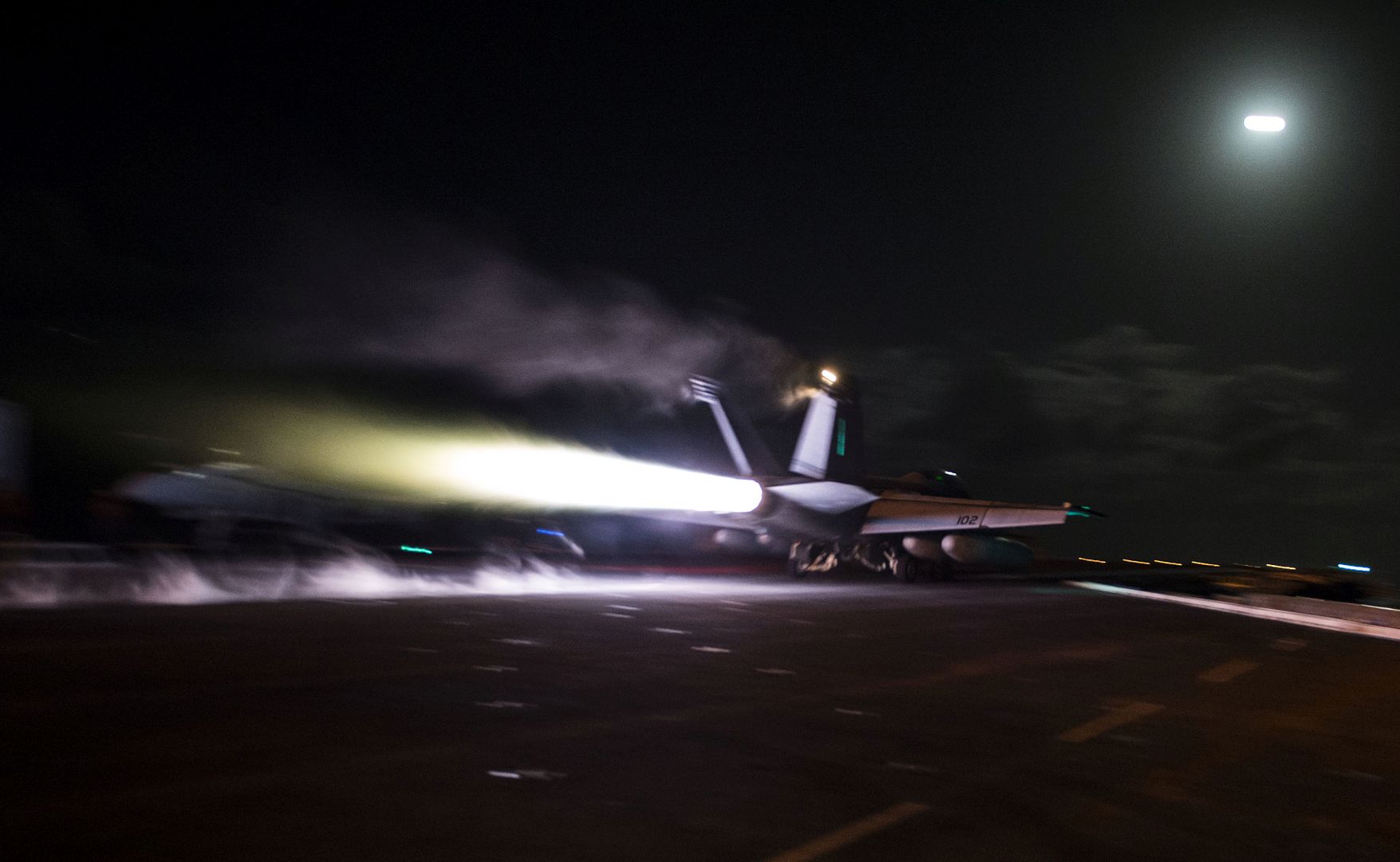
ATLANTIC OCEAN (Nov. 27, 2015)- An F/A-18C Hornet assigned to the Wildcats of Strike Fighter Squadron (VFA) 131 takes off from the flight deck of the aircraft carrier USS Dwight D. Eisenhower (CVN 69). Dwight D. Eisenhower is currently underway with embarked Carrier Air Wing 3 conducting the Tailored Ship's Training Availability (TSTA) and Final Evaluation Problem (FEP) phase of their pre-deployment schedule. (U.S. Navy photo by Mass Communication Specialist 3rd Class J. Alexander Delgado/Released)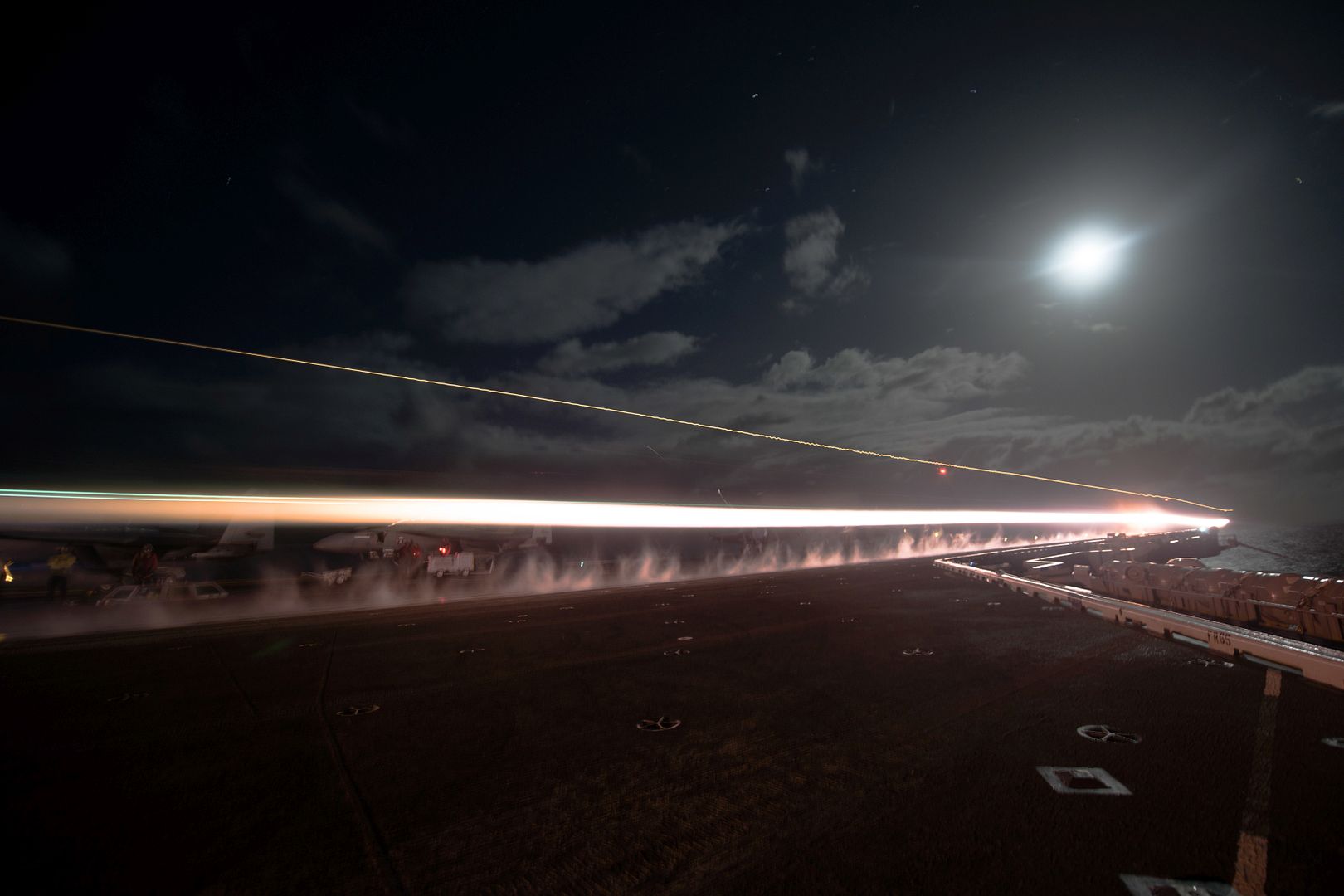
LONG BEACH, Calif., Nov. 29, 2015 ? The final Boeing [NYSE: BA] C-17 Globemaster III military airlifter at the company?s plant in Long Beach, Calif. departed on Sunday, Nov. 29, marking the official end of aircraft production in Long Beach.
The airlifter flew over a crowd and the facility before heading to the company?s San Antonio location, where it will remain until delivery to the Qatar Emiri Air Force early in 2016.
With the completion of C-17 production, Boeing will continue the Globemaster III legacy, providing support, maintenance and upgrades to the worldwide C-17 fleet under the C-17 Globemaster III Integrated Sustainment Program (GISP) Performance-Based Logistics agreement.
?This is truly the end of an era. It?s a sad day, but one that all of the Boeing employees and suppliers who have worked over the years building this great aircraft can be proud of,? said Nan Bouchard, vice president and C-17 program manager.
?Our team?s work and dedication and professionalism created one of the world?s leading airlifters, a plane that is at the forefront for providing humanitarian aid and has changed the way the U.S. Air Force and our international partners mobilize for operations and aeromedical support,? Bouchard said.
The decision to end production of the C-17 production program was announced in 2013. Since the first C-17 took to the air on Sept. 15, 1991, the C-17 fleets for the U.S. Air Force and international partners have amassed more than three million flying hours supporting airlift of troops and large cargo, precision airdrop of humanitarian supplies and lifesaving aeromedical missions.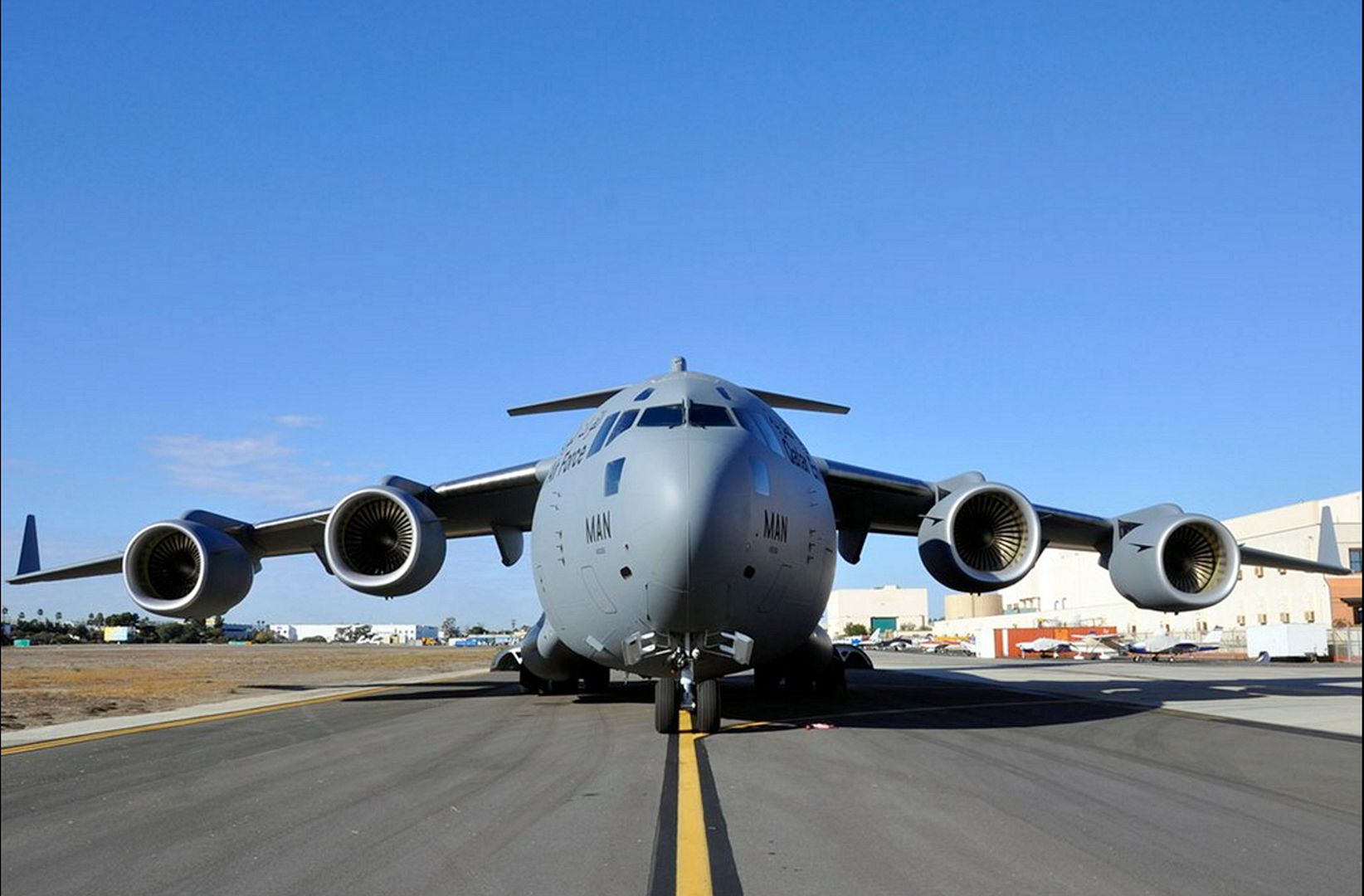
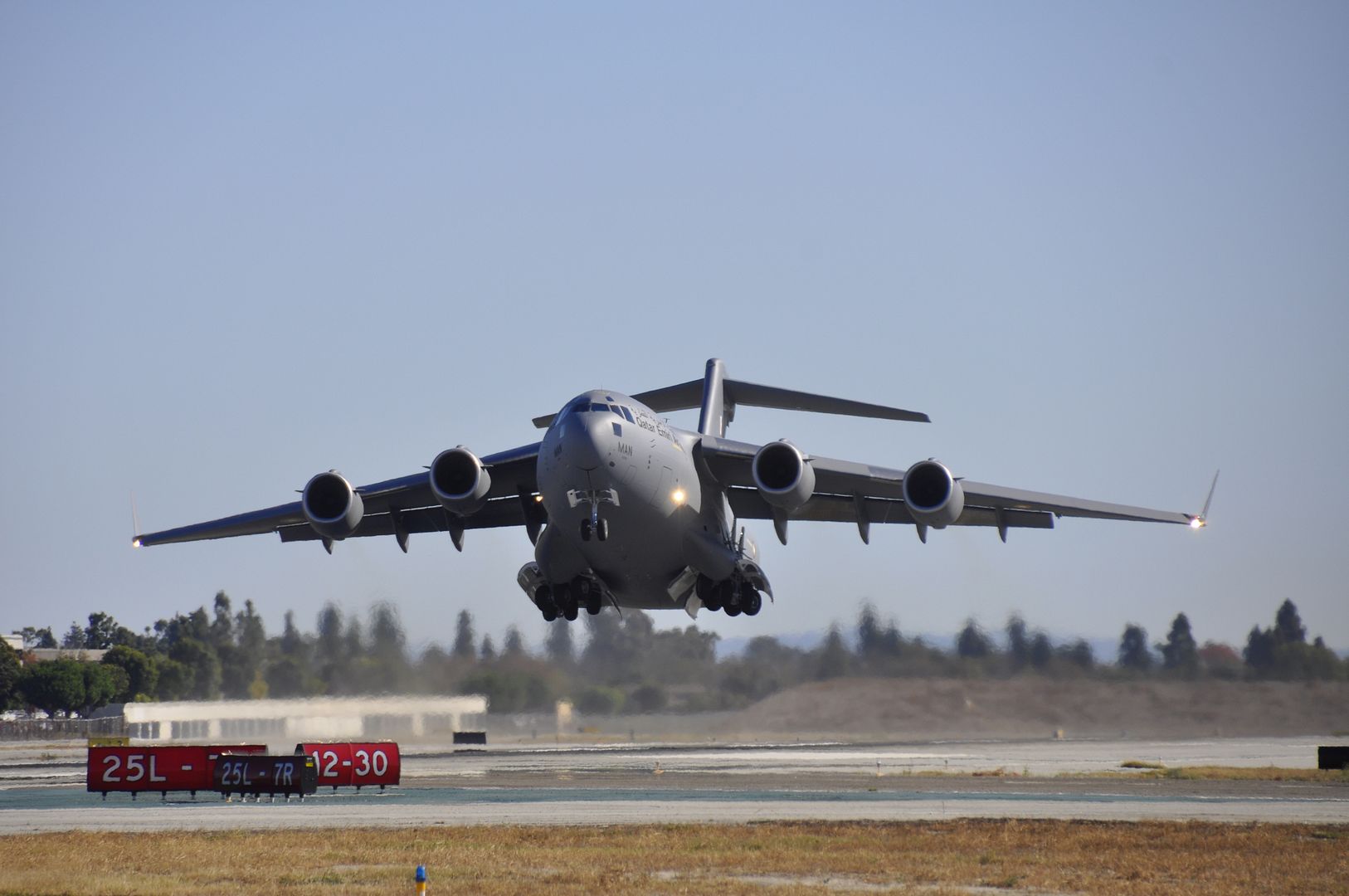
-
 Main AdminHILL AIR FORCE BASE, UTAH, Dec. 1, 2015 ? As the U.S. Air Force prepares for initial F-35 Lightning II operations, pilots at Hill Air Force Base are rehearsing missions with new simulators delivered by Lockheed Martin [NYSE: LMT].
Main AdminHILL AIR FORCE BASE, UTAH, Dec. 1, 2015 ? As the U.S. Air Force prepares for initial F-35 Lightning II operations, pilots at Hill Air Force Base are rehearsing missions with new simulators delivered by Lockheed Martin [NYSE: LMT].
Pilots are now training with four Full Mission Simulators linked together to hone their tactical employment of the F-35 against ground and airborne threats. As a complement to live flights, the Full Mission Simulators present a secure, realistic environment for pilots to develop tactics and integrate the F-35 into the Air Force?s arsenal. The 34th Fighter Squadron at Hill Air Force Base is the first operational F-35A squadron and will reach combat readiness in August 2016.
?The F-35 is going to be an incredible advancement in our capability as an Air Force, and the Full Mission Simulators present an environment to adequately challenge our pilots as they prepare for combat,? said Lt. Col. George Watkins, 34th Fighter Squadron Commander.
?All the pieces of the technology puzzle are coming together to support the Air Force?s F-35 mission readiness,? said Mary Ann Horter, vice president of F-35 Sustainment Support at Lockheed Martin. ?Airmen at Hill Air Force Base are launching the future of aviation, and our focus is supporting them with the most effective training and logistics technologies.?
To date, 143 pilots and 846 maintainers for the Air Force have qualified through the F-35 Training System. By August 2016, more than 190 F-35 pilots and 1,000 maintenance personnel for the Air Force will be mission ready.
The Full Mission Simulators are the centerpiece of the F-35 Training System designed to maximize simulation for effectiveness and affordability. Currently, 191 suppliers contribute to the F-35 Training System. The F-35 program is built on extensive industrial participation to generate economic growth in F-35 nations and deliver the best value.
1 December 2015 Press Release
Turkish Airlines, Turkey?s flagship airline, has firmed-up a commitment for the purchase of 20 additional A321neo aircraft. The airline already has 72 A321neo on order and is now again renewing its confidence in the A321neo as the aircraft of choice to boost its expansion.
?As one of the world?s fastest growing airlines, our ambitious growth strategy needs to be fully supported by only the most efficient, reliable and profitable aircraft,? said Dr. Temel Kotil, CEO of Turkish Airlines. ?This order for 20 more A321neo will help us achieve our expansion plans in a profitable and sustainable manner.?
?We are extremely happy that Turkish Airlines has renewed its confidence in the A321neo, the largest member of our best-selling A320neo Family. The A321neo will not only meet but fully exceed the airline?s expectations in terms of operational efficiency, profitability and passenger appeal,? said John Leahy, Airbus Chief Operating Officer, Customers.
The A320neo Family incorporates latest technologies including new generation engines and Sharklet wing tip devices, which together deliver more than 15 percent in fuel savings from day one and 20 percent by 2020 with further cabin innovations. With more than 4,300 orders received from over 75 customers since its launch in 2010, the A320neo Family has captured some 60 percent share of the market.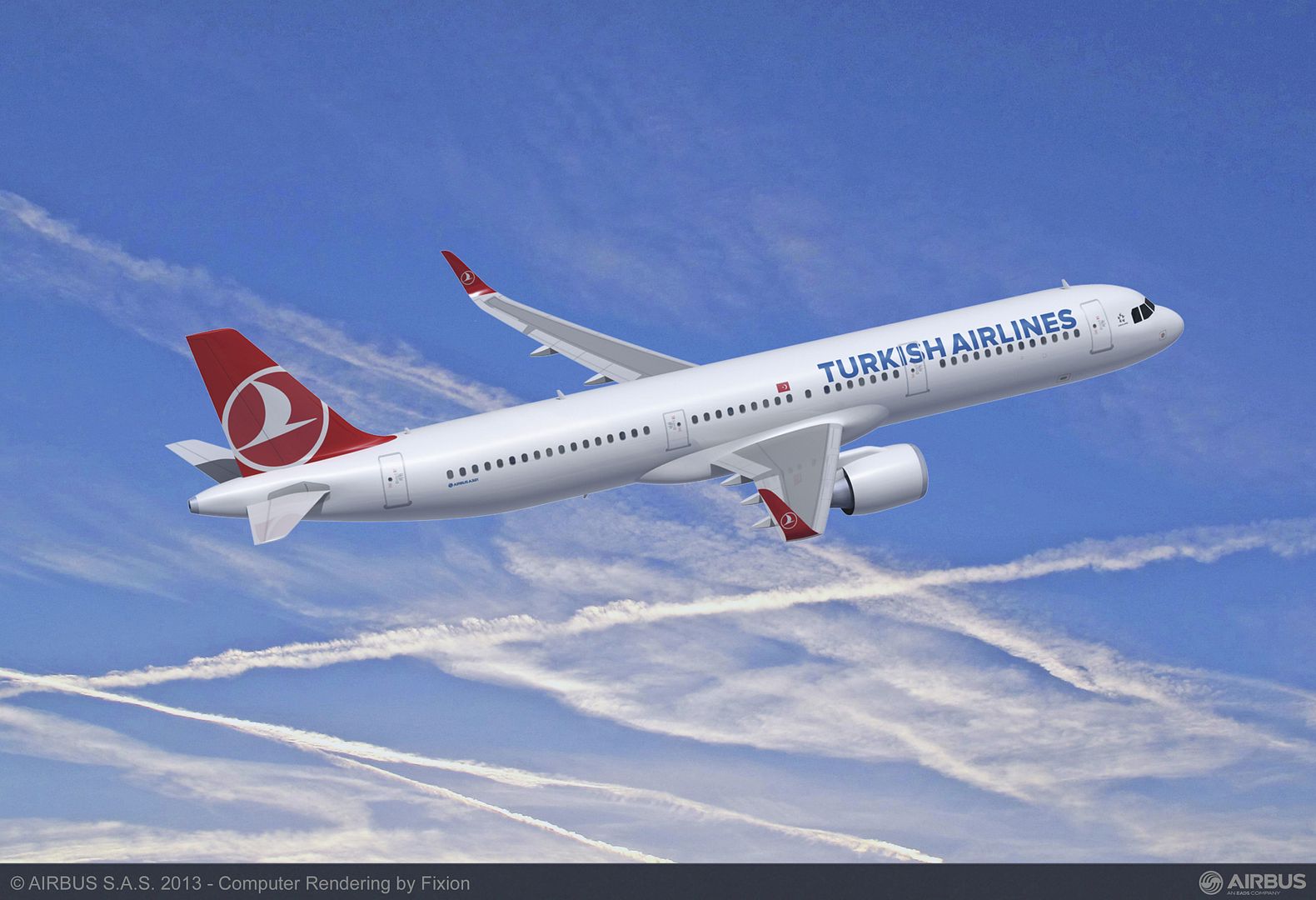
-
 Main AdminMembers of the 340th Expeditionary Air Refueling Squadron perform pre-fight checks before leaving to refuel F-16s from the Royal Norwegian Air Force and the Republic of Singapore Air Force over Southwest Asia in support of Operation Inherent Resolve, Dec.1, 2015. OIR is the coalition intervention against Daesh. (U.S. Air Force photo by Tech. Sgt. Nathan Lipscomb)
Main AdminMembers of the 340th Expeditionary Air Refueling Squadron perform pre-fight checks before leaving to refuel F-16s from the Royal Norwegian Air Force and the Republic of Singapore Air Force over Southwest Asia in support of Operation Inherent Resolve, Dec.1, 2015. OIR is the coalition intervention against Daesh. (U.S. Air Force photo by Tech. Sgt. Nathan Lipscomb)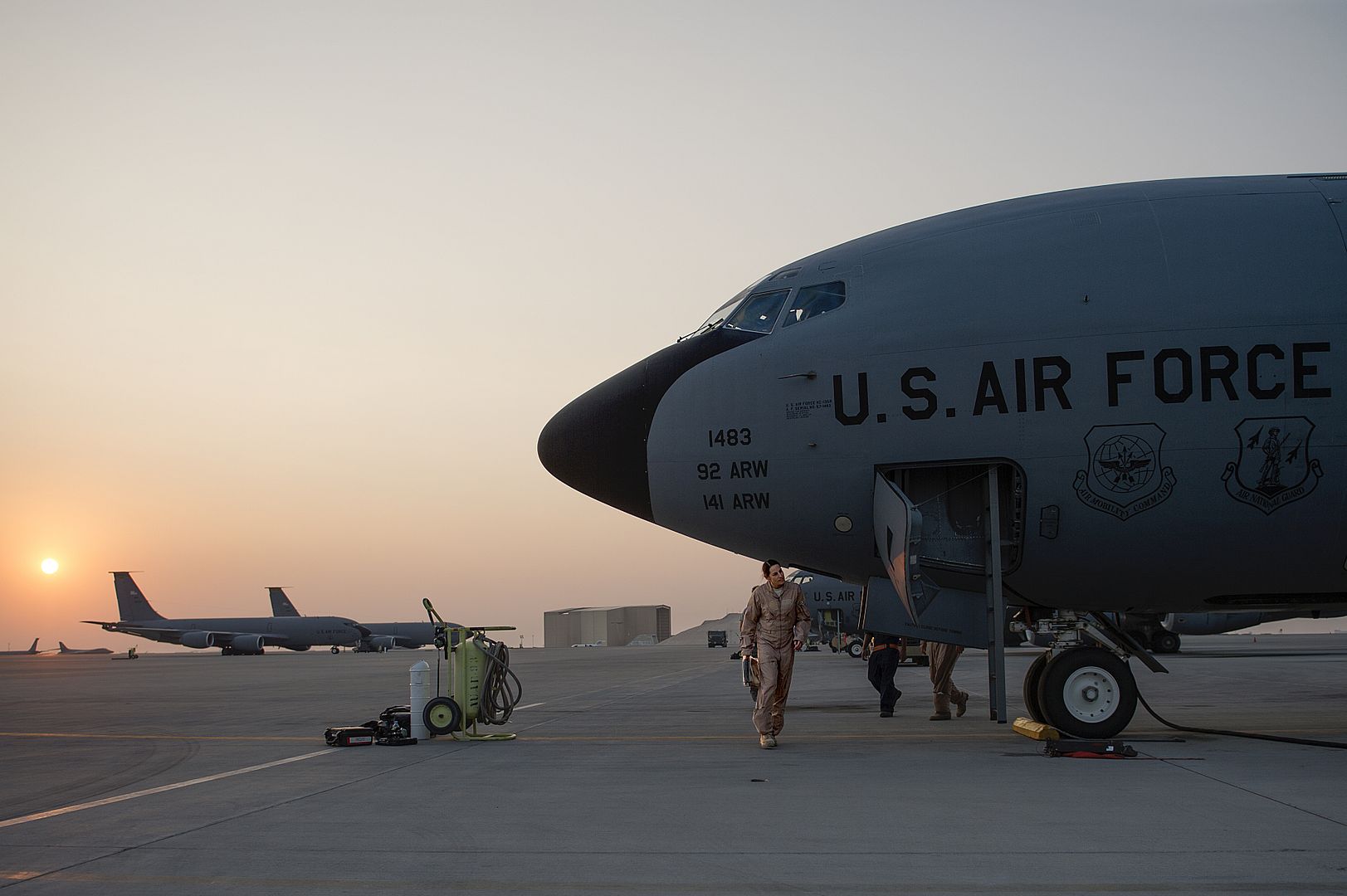
Russia's air force announced on 30 November that its Sukhoi Su-24 and Su-34 combat aircraft operating in Syria have been armed with air-to-air missiles.
The development came less than a week after one of the former type was shot down by a Turkish air force Lockheed Martin F-16, and only days since Moscow deployed Almaz-Antey S-400 surface-to-air missiles to the conflict zone.
Tension continues to exist between Russia and Turkey following the Su-24's engagement, with Ankara refusing to apologise for the incident, which left one pilot dead.
With Russian combat aircraft expected to be operated while carrying defensive weapons such as Vympel R-27 medium- and R-73 short-range air-to-air missiles, the potential for an exchange of weapons is a "very realistic scenario", Israeli sources have cautioned.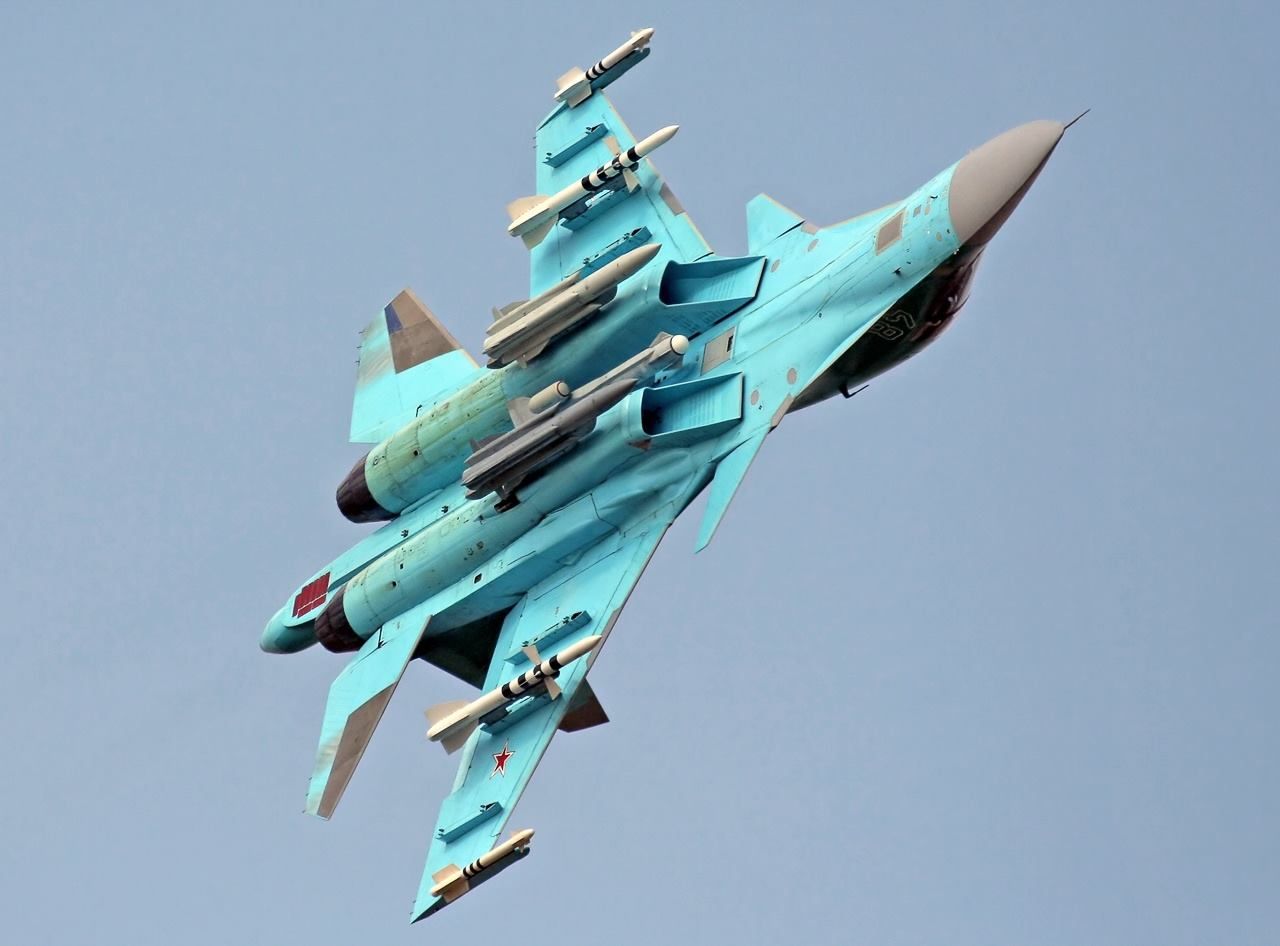
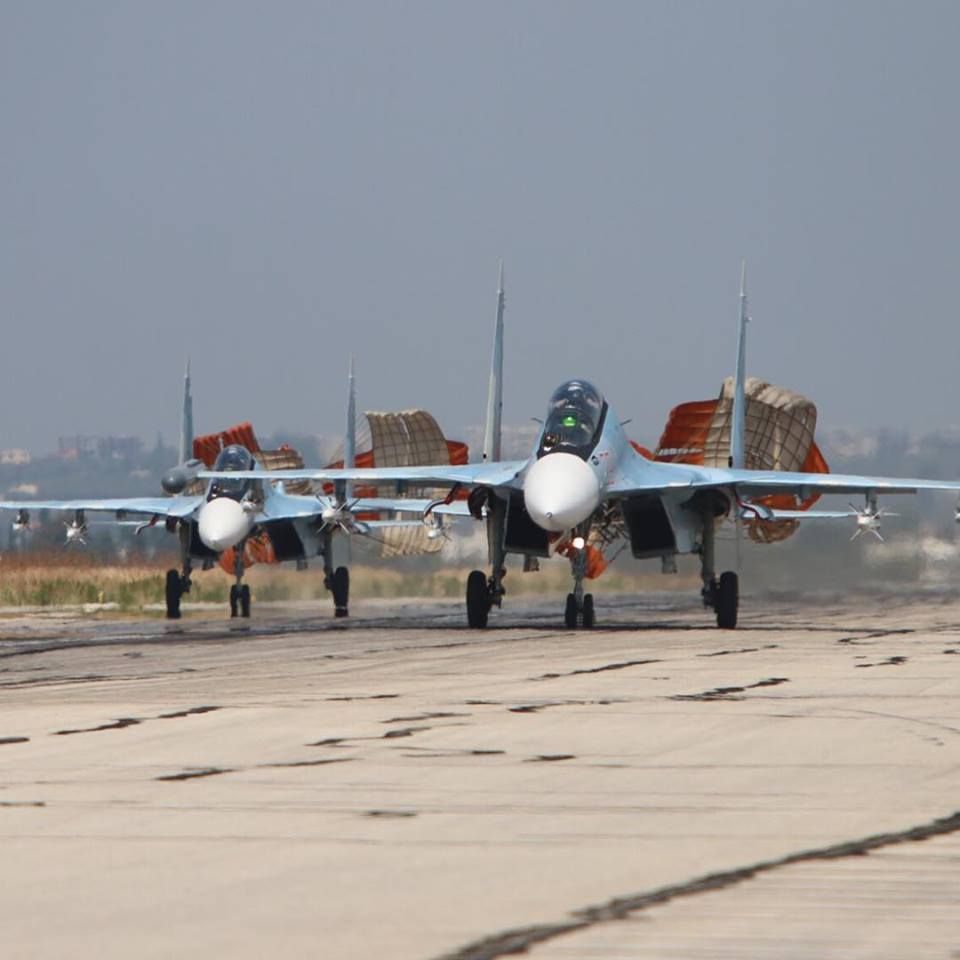
POINT MUGU, Calif., Dec. 1, 2015 (GLOBE NEWSWIRE) -- The U.S. Navy and Northrop Grumman Corporation (NYSE:NOC) completed a successful land-based operational assessment (OA) with the unmanned, autonomous helicopter MQ-8C Fire Scout, at Naval Base Ventura County, Point Mugu, Nov. 20. The OA demonstrated the endurance and sensor integration capabilities on the new MQ-8C airframe.
Photos accompanying this release are available at: http://media.globenewswire.com/noc/mediagallery.html?pkgid=37915
The Fire Scout collected real time data points during OA flights to validate system performance parameters and assess risk to future operational testing. The Navy's Air Test and Evaluation Squadron VX-1 performed all of the flights over three weeks culminating in 83.4 hours of flight and 72 data points.
"MQ-8C represents a significant capability improvement to the Fleet," said Capt. Jeff Dodge, program manager, Fire Scout, Naval Air Systems Command. "Testing has shown the system is meeting or exceeding our goals and the completion of this test event represents a major step on the road to Fleet introduction."
Northrop Grumman engineers' hard work in developing the MQ-8C ensured that all aircraft systems successfully met VX-1 flight requirements. MQ-8C sensors and systems were vigorously tested at different altitudes and ranges to validate operational effectiveness. Successful integration of an improved ice detector system was also validated during OA with an alert to the test team of icing during a flight. This system allowed for necessary altitude corrections by descending the helicopter until the indication cleared so that the mission could resume its target detection runs.
"The completion of land-based OA is once again validation of the incredible performance the Fire Scout system is capable of," said Leslie Smith, Fire Scout program director, Northrop Grumman. "As demonstrated in the test, Fire Scout's multi-INT capability and endurance, coupled with outstanding reliability are changing the way intelligence, surveillance and reconnaissance systems are measured; we have significantly raised the bar."
MQ-8C Fire Scout completed the developmental flight tests program earlier this year and now the program will prepare for milestone "C" next year. The MQ-8C Fire Scout has accumulated over 730 flight hours and flown 353 sorties.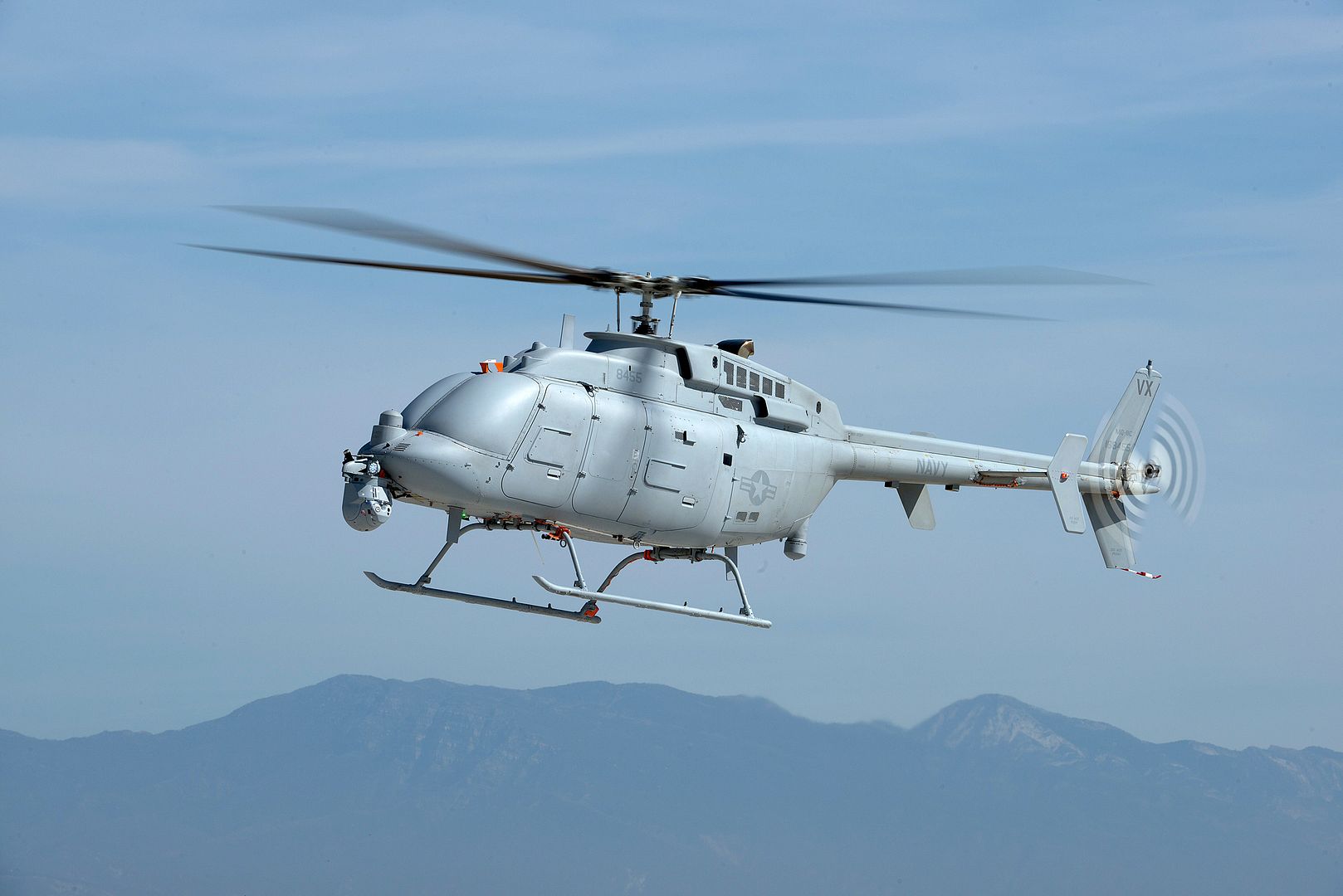
Orlando, Fla., Dec. 2, 2015 ? Through the Republic of Singapore Air Force (RSAF) Basic Wings Course (BWC) program, Lockheed Martin (NYSE: LMT) and teammates Pilatus Aircraft and Hawker Pacific have delivered 50,000 flying hours and trained more than 300 pilots since 2008.
?The Basic Wings Course is a critical segment of the RSAF?s pilot generation pipeline. A key enabler for us to achieve this 50,000 accident-free flying hours milestone is the strong partnership between the RSAF and Lockheed Martin. Reaching this milestone also reflects our common emphasis on training excellence and safety. I congratulate 130 Sqn and Lockheed Martin on this occasion, and look forward to the Team achieving the next 50,000 hours,? said COL Tan Yik, Head Air Training, the Republic of Singapore Air Force.
As the Training Systems Integrator for BWC, Lockheed Martin delivers a turn-key training system comprised of aircraft, maintenance, simulators, training and logistics management systems, courseware and instructors. The program is operated at the Republic of Singapore?s 130 Squadron at Royal Australian Air Force Base Pearce; additional instructors at Paya Lebar Air Base in Singapore teach the Basic Aviation Ground School under the authority of the Flying Training Institute.
?Reaching this 50,000 flying hour milestone demonstrates the exceptional partnership we share with the RSAF and our team?s dedication to deliver an efficient, seamless and safe flying training environment,? said Jon Rambeau, vice president for Lockheed Martin Training and Logistics Solutions. ?We are honored to assist the RSAF in training their next generation of pilots and look forward to delivering valued capability for decades to come.?
As part of Team 21, Pilatus Aircraft Ltd. is the original aircraft manufacturer for the PC-21 turboprop trainer and provides engineering and logistics support for the platform. Hawker Pacific Ltd. delivers aircraft maintenance and provides the ?Authorized Maintenance Organization? for Team 21.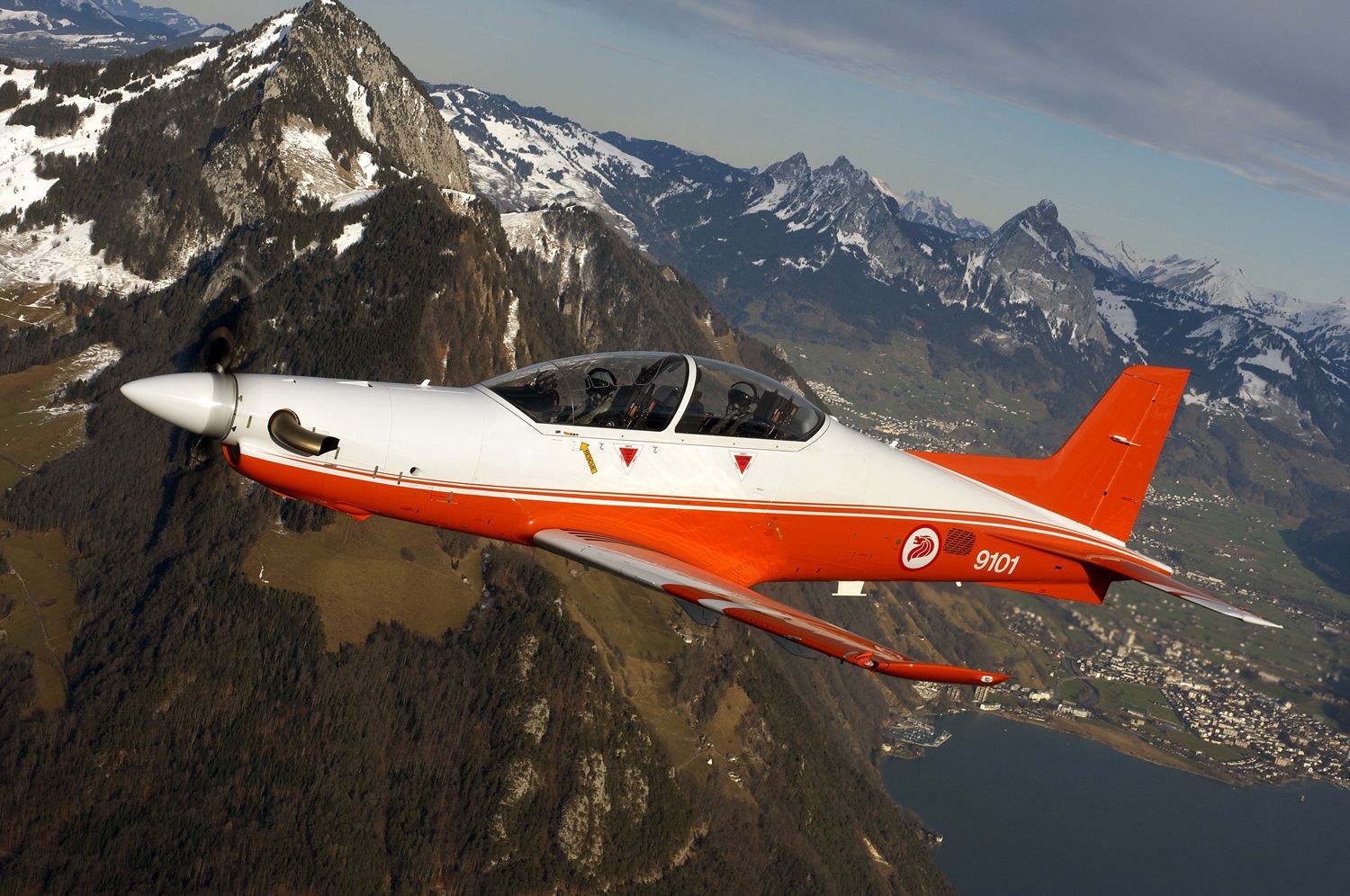
ST. LOUIS, Dec. 1, 2015 ? The U.S. Navy and Boeing [NYSE: BA] recently demonstrated new targeting technologies that greatly enhance aircrew safety and effectiveness through the rapid integration and distribution of target information across multiple aircraft.
Utilizing an advanced targeting processor, an open architecture, high-bandwidth data link, and a Windows-based tablet integrated with the mission system, the demonstration proved that Boeing EA-18G Growler electronic attack aircraft can detect targets over longer distances and share information more rapidly than ever before.
?This enhanced targeting capability provides our aircrews with a significant advantage, especially in an increasingly dense threat environment where longer-range targeting is critical to the fight,? said Capt. David Kindley, U.S. Navy F/A-18 and EA-18G program manager.
Naval aviation history was made during the Navy fleet experimentation campaign when data was integrated from multiple Growlers operating with an E-2 Hawkeye aircraft, utilizing the new high-bandwidth data link and increasing the speed and accuracy of target locating.
Use of the tablet device integrated with the aircraft mission system was another first for a Navy platform. That technology allowed aircrews to more easily access data and communicate with crews in other aircraft.
Existing Growlers will be retrofitted with the upgrades while the technology will be included as a standard offering on all new aircraft currently in production.
?The complexity of global threat environments continues to evolve,? said Dan Gillian, Boeing F/A-18 and EA-18G programs vice president. ?This long-range targeting technology is essential as we advance electronic attack capabilities for the conflicts of today and tomorrow.?
The EA-18G Growler is derived from the combat-proven F/A-18F Super Hornet and is the United States? newest and most advanced airborne electronic attack platform, providing electronic intelligence, surveillance and reconnaissance data to other aircraft. The Growler has been deployed since 2010 supporting U.S. and allied forces.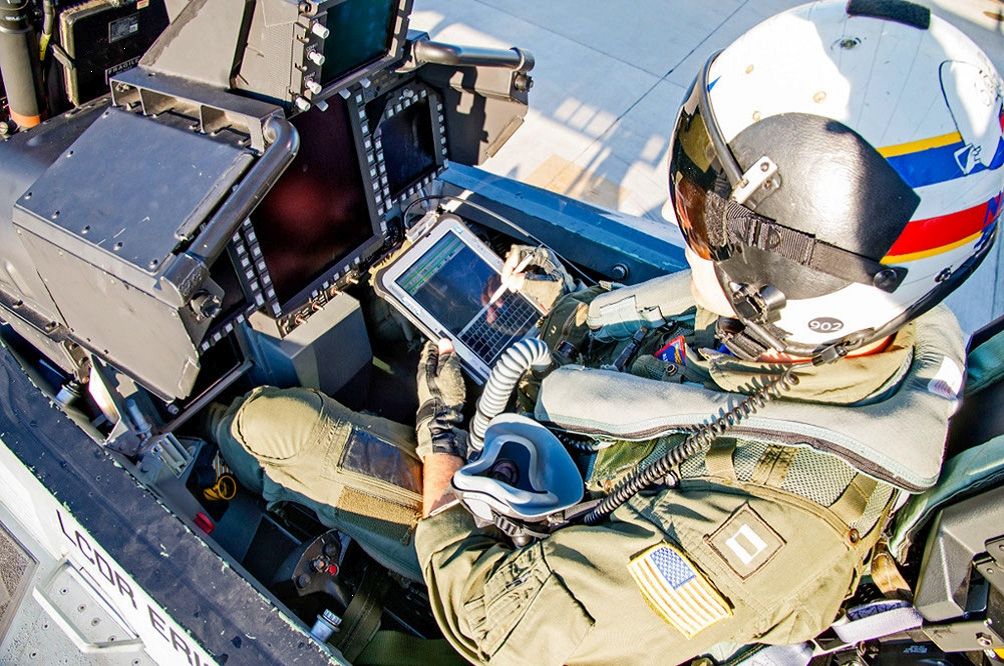
1 December 2015 Press Release
TAM Airlines? first A350 XWB has successfully taken off from Toulouse International Airport in France. The aircraft now progresses to the final production phase which includes further ground checks and flight tests, before delivery to TAM Airlines in December.
TAM will become the first airline from the Americas to fly the A350 XWB and the fourth operator in the world. LATAM Airlines Group, made up of LAN Airlines and TAM Airlines, has ordered 27 A350 XWB aircraft. The carrier will start operating the A350 XWB in January 2016 between Sao Paulo and Manaus. This will be followed by international operations from Sao Paulo to Miami, to Madrid and to Orlando.
The A350 XWB is Airbus? all-new mid-size long range aircraft family and the newest member of Airbus' leading widebody family. The A350 XWB is the world?s most modern and efficient aircraft family, setting new standards in terms of flight experience for passengers, operational efficiency and cost-effectiveness for airlines. The A350 XWB received 787 Firm orders from 41 customers as of October 2015.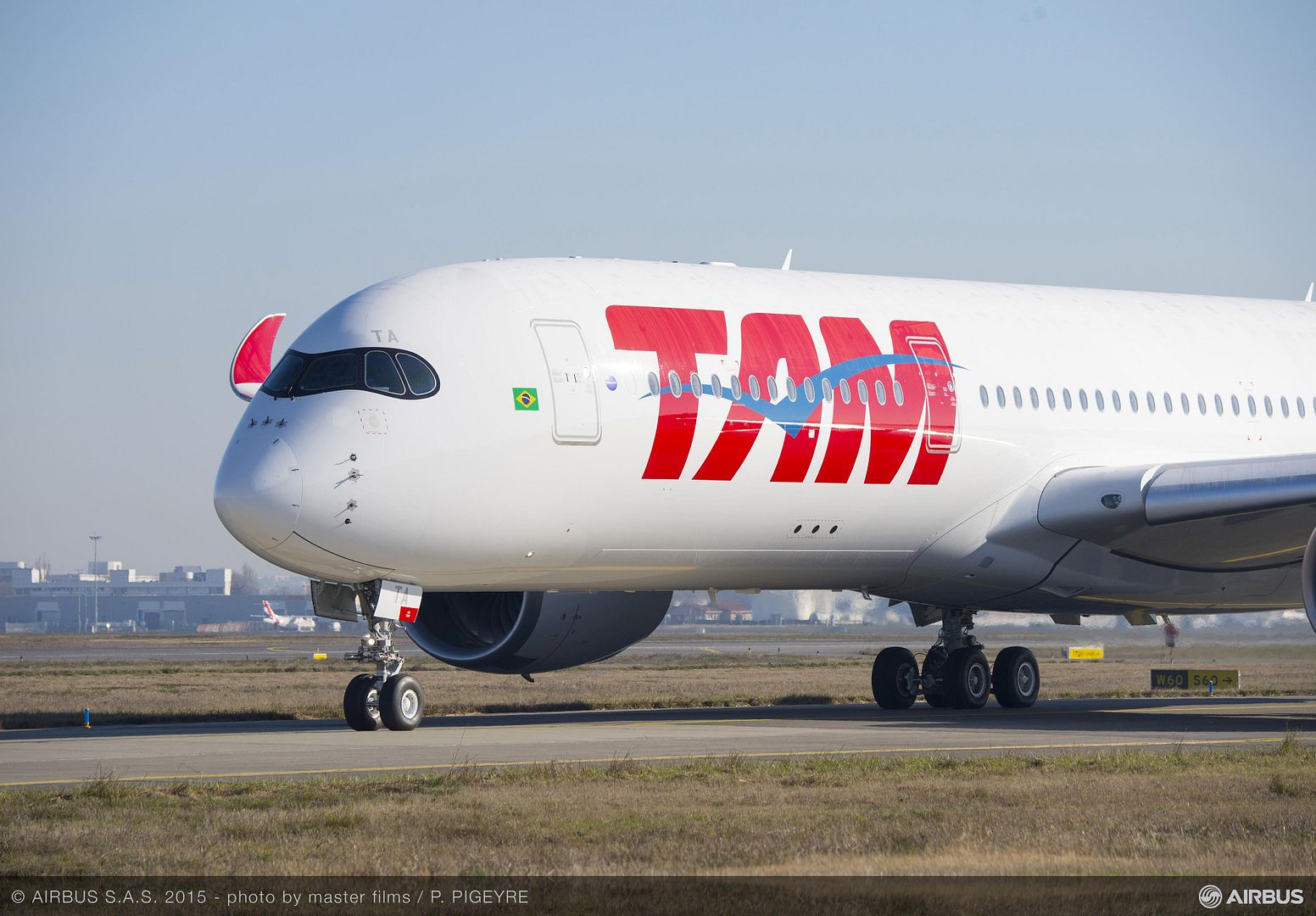
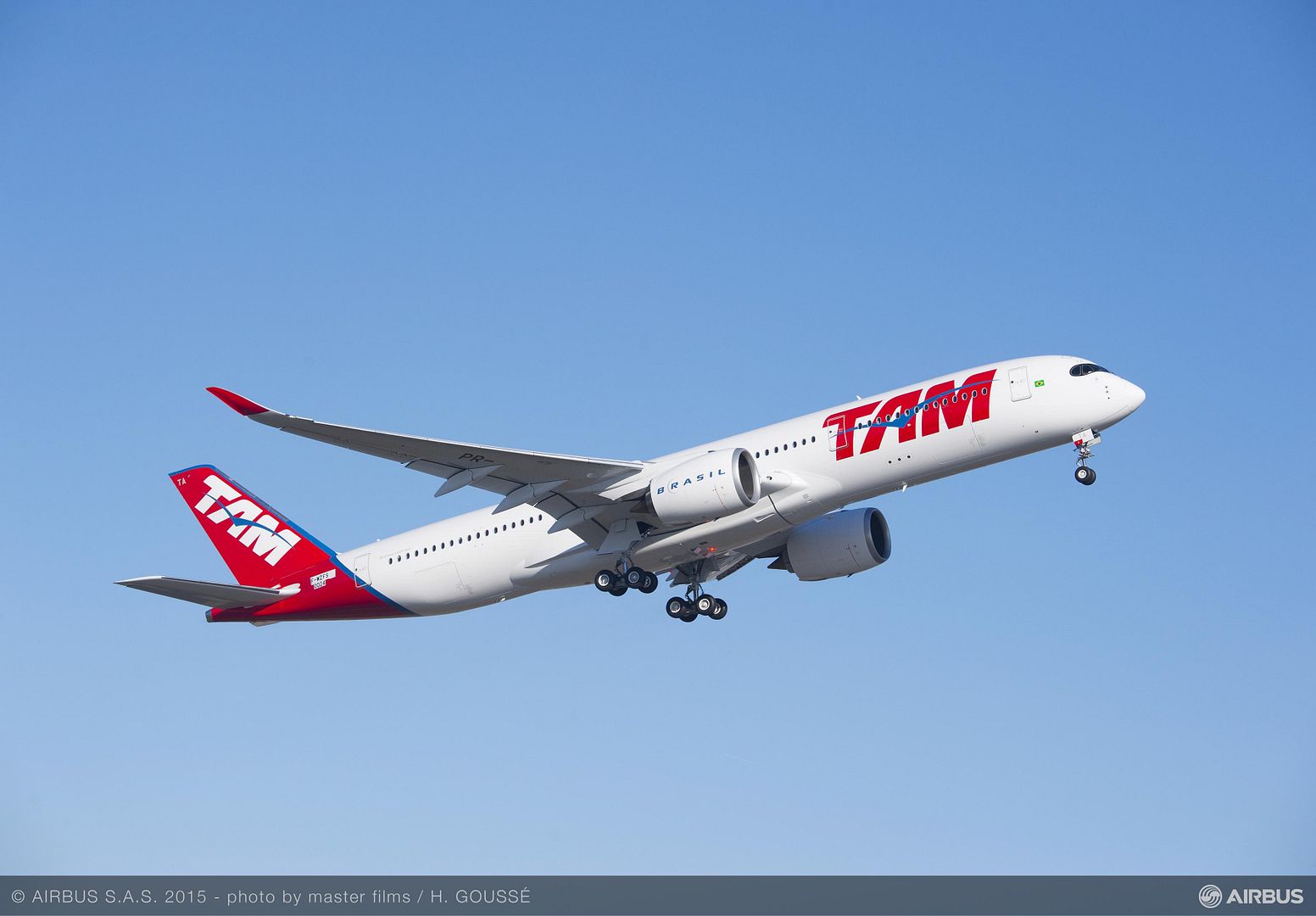
-
 Main AdminRoyal Air Force Tornado aircraft, as part of operations against Daesh, have flown their first missions over Syria.
Main AdminRoyal Air Force Tornado aircraft, as part of operations against Daesh, have flown their first missions over Syria.
Last night parliament granted approval for the UK to extend their airstrikes to include Syria, as well as Iraq, as part of counter-Daesh coalition operations. Within hours, Royal Air Force Tornados flew their first offensive operation on terrorist targets inside Syria.
Supported by a Voyager air refuelling tanker and a Reaper, and operating in conjunction with other coalition aircraft, the Tornados employed Paveway IV guided bombs to conduct strikes against six targets on an oilfield at Omar ? one of the largest and most important oilfields to Daesh?s financial operations, representing over 10% of their potential income.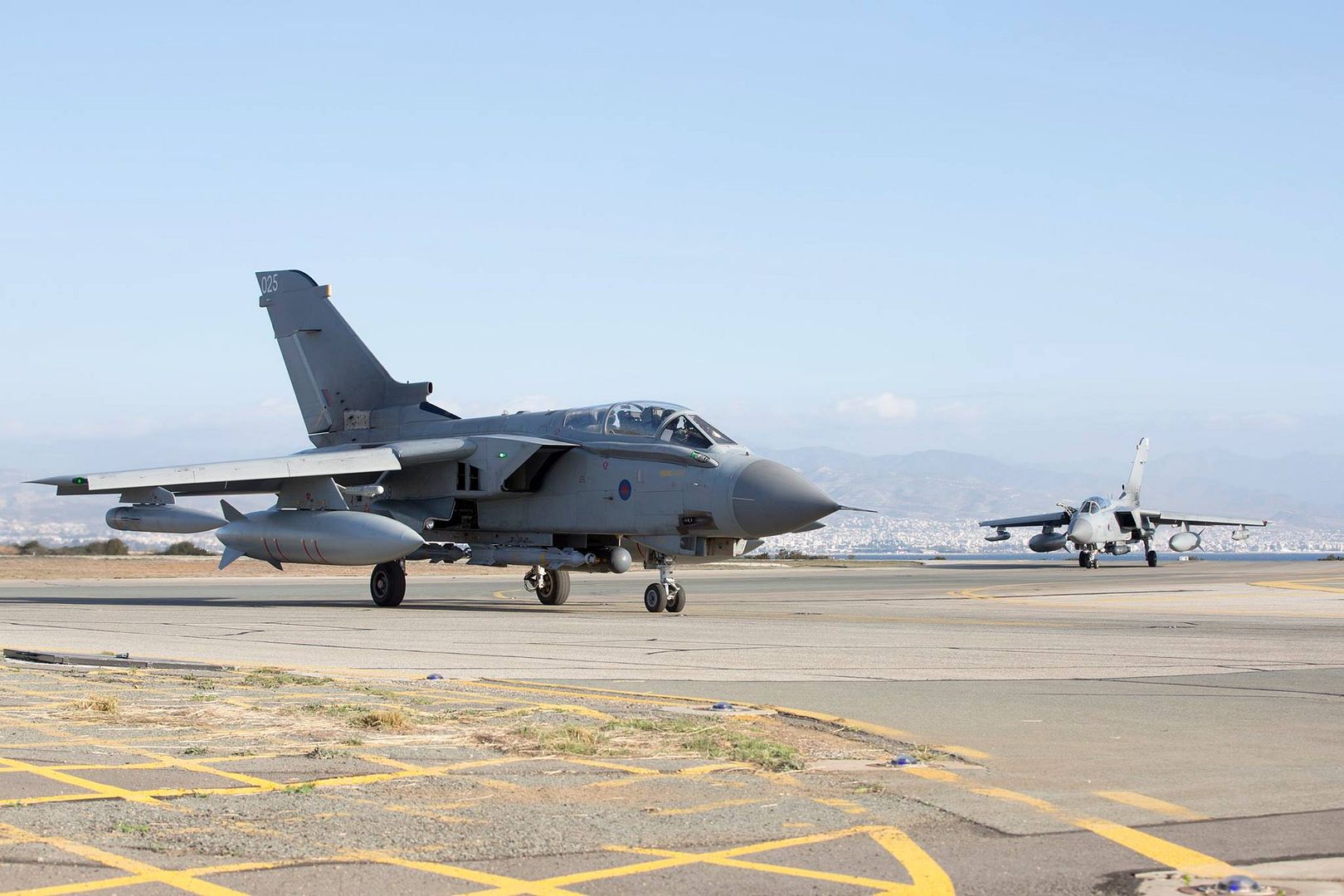
A U.S. Air Force F-22 Raptor assigned to the 3rd Wing takes off from Joint Base Elmendorf-Richardson, Alaska, Dec. 2, 2015. The 3rd Wing Airmen support and defend U.S. interests in the Asia Pacific region and around the world by providing units that are ready for worldwide air power projection. (U.S. Air Force photo/Alejandro Pe?a)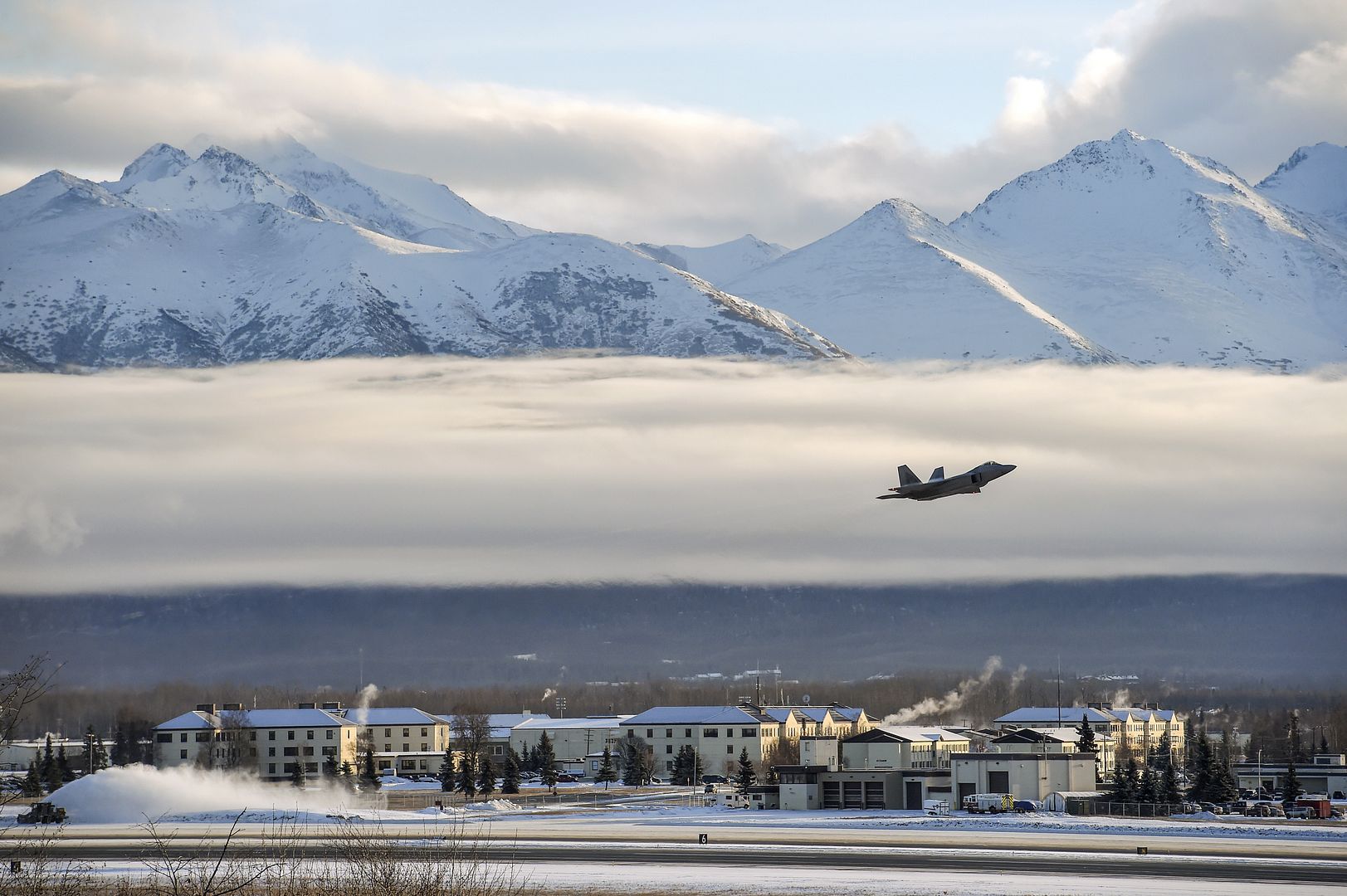
EVERETT, Wash., Dec. 2, 2015 /PRNewswire/ -- Boeing (NYSE: BA) has completed detailed design for the 787-10 Dreamliner, achieving another major milestone in the development of the newest and longest member of the 787 family. Boeing engineers reached the key milestone nearly two weeks ahead of schedule.
The milestone is critical to every development program because it means the information needed to build parts and tools for assembly has been completed and released for fabrication or procurement. Major assembly of the 787-10 will begin in 2016, followed by first flight in 2017 and first delivery in 2018.
"With the 787-10, we are building upon our experience and the 787-9 design itself to create this newest member of the super-efficient 787 family," said Ken Sanger, vice president of 787 Airplane Development. "Through our dedicated team and our disciplined processes, we have optimized the design for the needs of the market and are excited as we look forward to production."
As a straightforward stretch of the 787-9, which entered service in 2014, Boeing designed the 787-10 for superior efficiency as well as maximum commonality. Ninety-five percent of the design and build of the 787-10 and 787-9 will be identical, reducing complexity, cost and risk across the production system and providing operational benefits to customers.
The 787-10 is the third and longest member of the 787 family. With a range of 6,430 nautical miles (11,910 km), the 787-10 will cover more than 90 percent of the world's twin-aisle routes at a whole new level of fuel efficiency: 25 percent more fuel efficient than the airplanes it will replace and at least 10 percent better than anything offered by the competition for the future.
To date, the 787-10 has logged 164 orders from nine customers around the world, accounting for 14 percent of all 787 orders.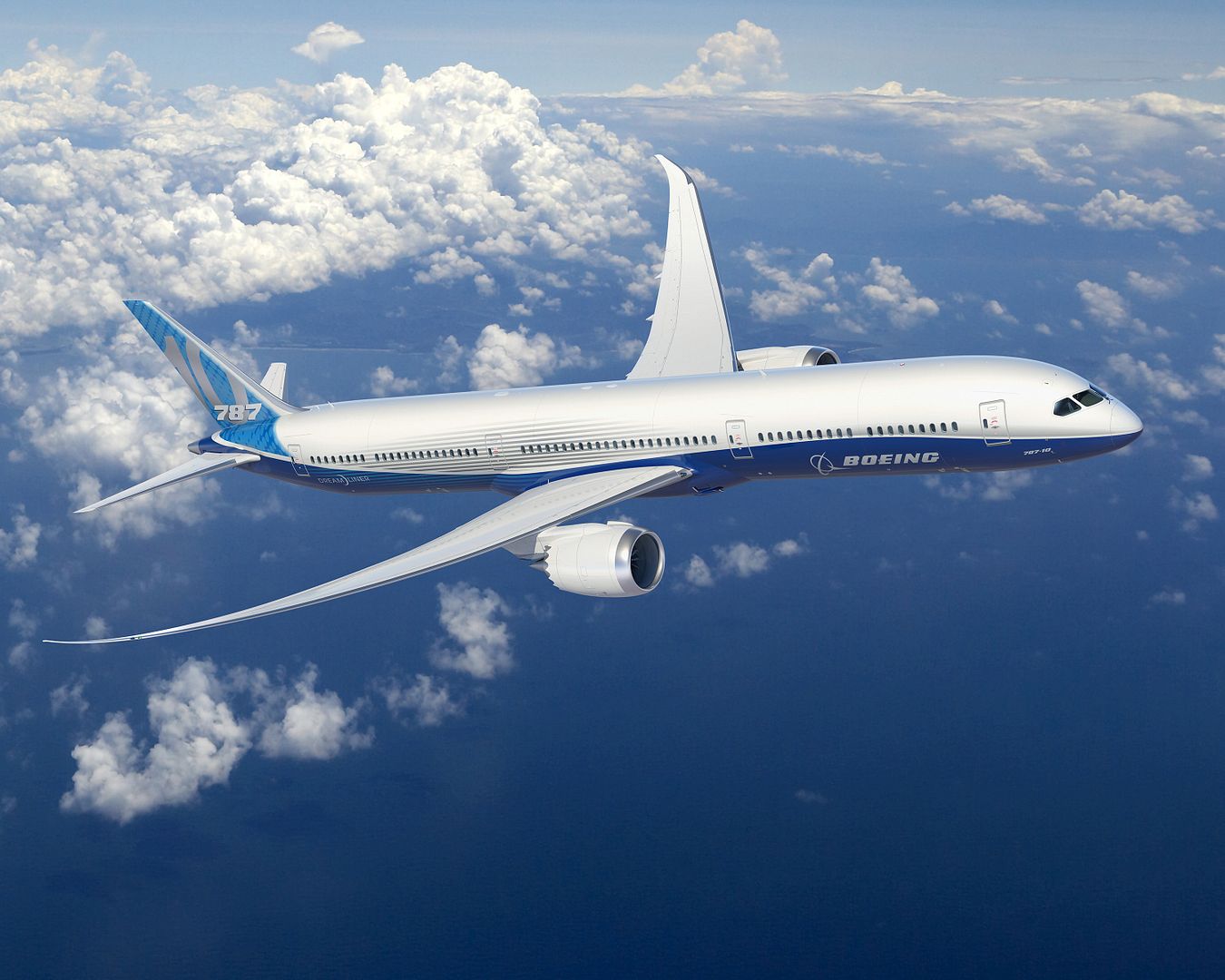
Post a reply
- Go to Previous topic
- Go to Next topic
- Go to Welcome
- Go to Introduce Yourself
- Go to General Discussion
- Go to Screenshots, Images and Videos
- Go to Off topic
- Go to Works in Progress
- Go to Skinning Tips / Tutorials
- Go to Skin Requests
- Go to IJAAF Library
- Go to Luftwaffe Library
- Go to RAF Library
- Go to USAAF / USN Library
- Go to Misc Library
- Go to The Ops Room
- Go to Made in Germany
- Go to Campaigns and Missions
- Go to Works in Progress
- Go to Juri's Air-Raid Shelter
- Go to Campaigns and Missions
- Go to Works in Progress
- Go to Skinpacks
- Go to External Projects Discussion
- Go to Books & Resources
